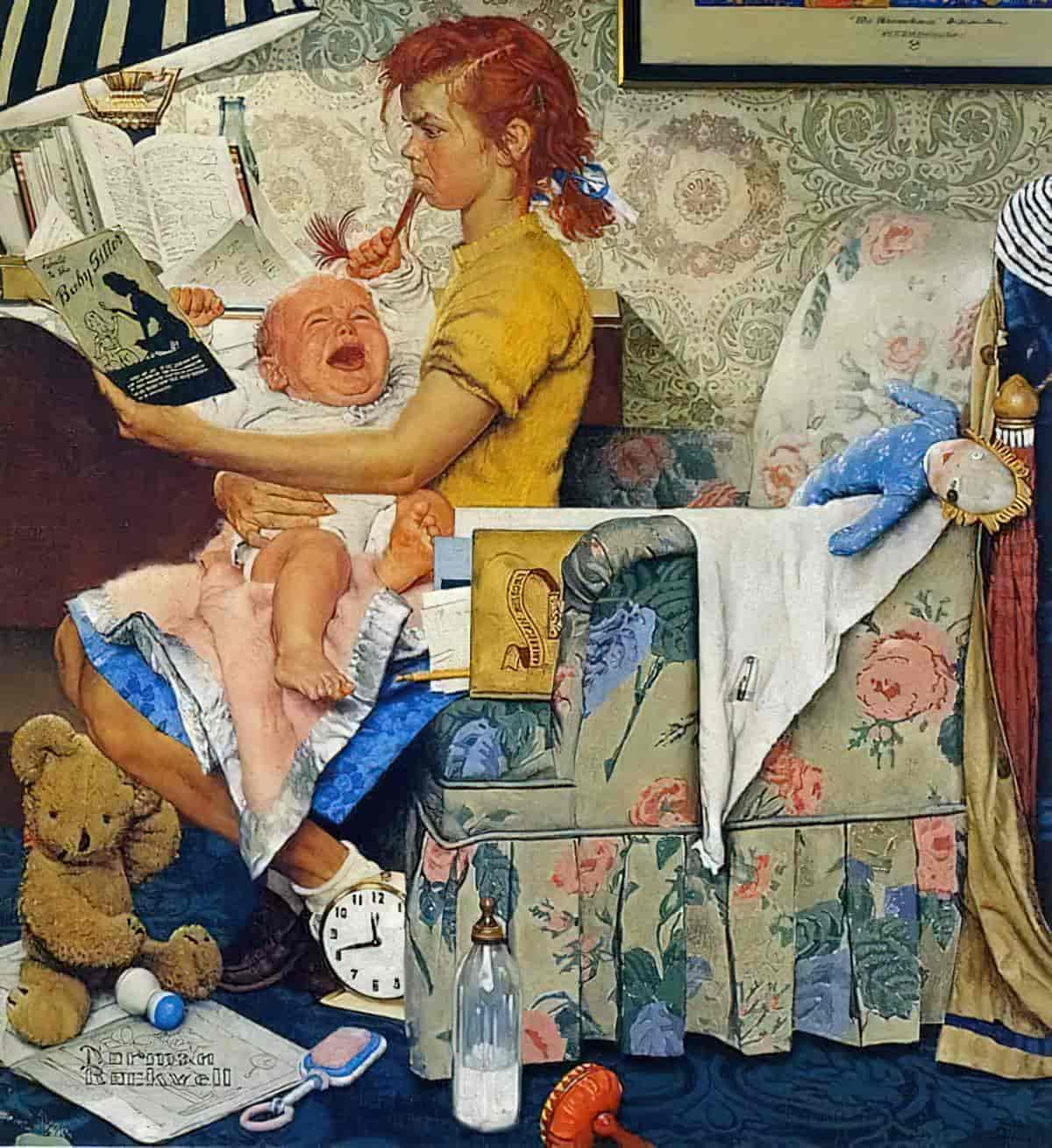The urban legend about the babysitter goes like this: Teenage girl is babysitting one night when she gets a menacing call. When she calls authorities, she is told that the call is coming from inside the house.
This story is so well-known that “The call is coming from inside the house” is now an idiomatic English expression, meaning that although someone is anxious about some external force, they should really be worried about whatever’s going on in their own organisation/group.
WHAT MAKES THE BABYSITTER URBAN LEGEND SUCCESSFUL AS A MEME?
This legend is the perfect mixture of horrifying and tantalising.
Horrifying: an unexpected telephone call. Also horrifying: the fear of home intrusion.
THE EVERGREEN FEAR OF HOME INTRUSION
An entire genre of stories, for pre-schoolers up, exists to assuage our fears about home intruders.
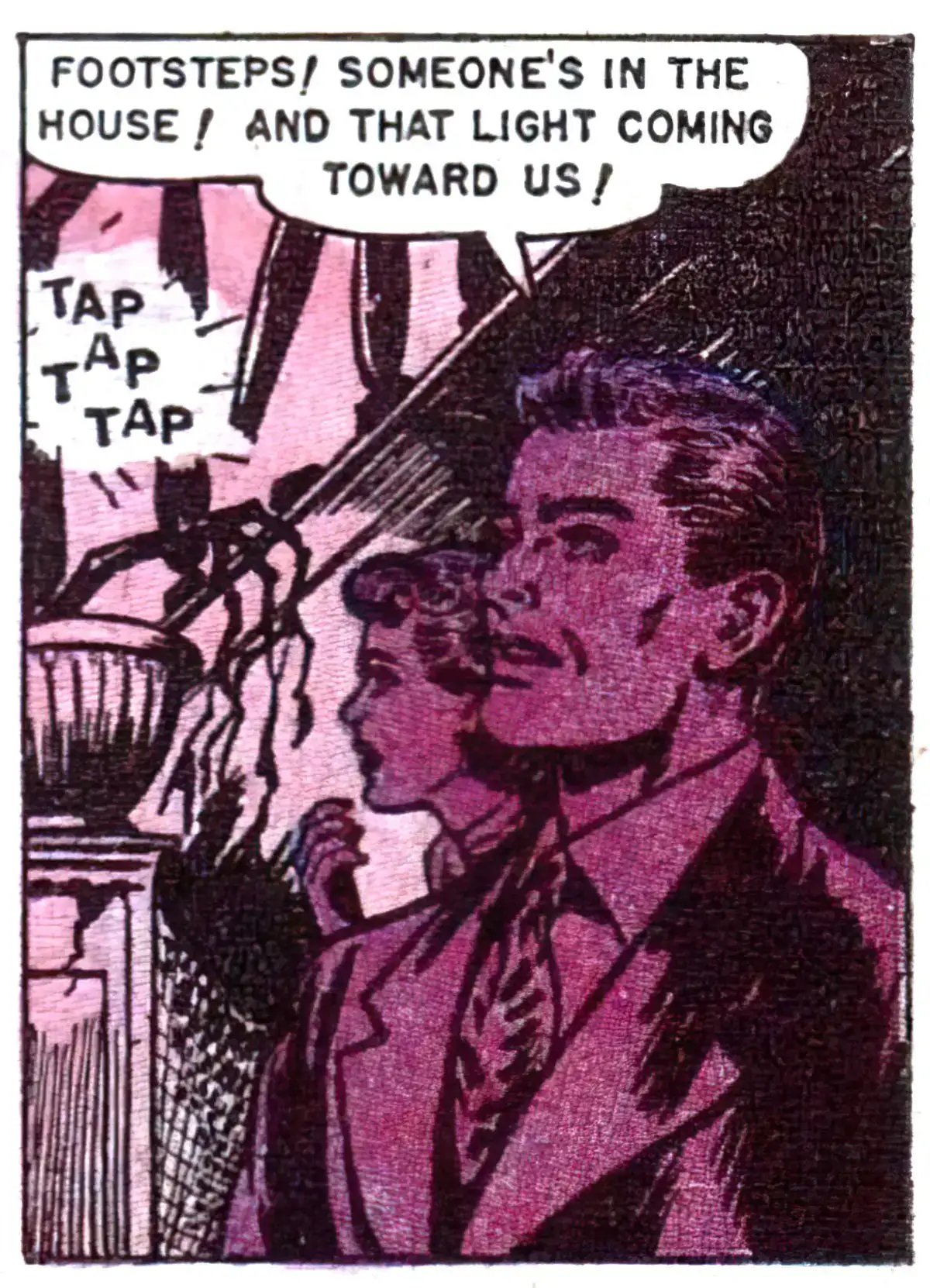
The fear of home intrusion works in the babysitter urban legend whether audiences put themselves in the shoes of the babysitter, or in the shoes of the absent parent/homeowners, who have entrusted the safety of their children to a young woman who may or may not let them down.
THE INHERENT TERROR OF TELEPHONES
Dial M for murder, When A Stranger Calls… The titles say it all. Telephones are scary.
Phone calls can be especially challenging for the neurodivergent population, as Pete Wharmby writes in Untypical:
Something that a lot of autistic people report when asked about making phone calls is that the act feels extremely intrusive. When I asked on Twitter, Hazel (@anlasair) noted that ‘I sort of feel like I’m being rude imposing myself onto others … I must prefer to text or email as then the person can just get to it when they’re free rather than a phone call which is demanding attention now.’
This is something I feel in my very bones. I’m extremely sensitive to worries about bothering other people, for any reason. I’d rather die of thirst than ask someone if I can have some water. This is not a form of hyper-passive-aggression — it’s a fear of disturbing other people’s peace. I suppose this stems from knowing how precious my own peace is. Intruding upon a person feels unthinkable to me. Whether it’s my own parents or someone working in a bank’s call centre, I cannot bring myself to intrude upon their lives as strongly as a ringing phone does. It’s just so rude!
Untypical: How the world isn’t built for autistic people and what we should all do about it (2023)
Autism aside, there is just one cohort of people entirely at home with the telephone. I’m generalising of course, but: Baby boomers and older Gen Xers.
The generation which came before Baby Boomers, (the “Silent Generation”) grew up without phones and were required to get used to them come hell or highwater.
From my own teenage years in the 1990s, I remember complaining to my father about a great uncle who called the house. I happened to answer and, although this great uncle was ‘with it’, as they say, he had great difficulty conveying information on the phone, and also struggled with modulation of his voice. The shouting-into-the-phone thing also applied to my grandmother (his sister), though in general, the older women of the family seemed far more at home with frequent and regular phone calls than the men, who seemed to use them as seldom as possible, and only to convey important information. My boomer father told me that Great Uncle Ron’s baffling and loudly unpleasant phone manner was entirely expected for a man of his generation.
oh you’re in a horror film/book and your phone died/has no bars? how boring. I think phones in horror SHOULD work. they should ding only to have the protagonist check and find nothing. they should get calls from somebody you don’t know but is still somehow in your contacts. google maps should lead you to one place, no matter what address you type in.
phones are such a big part of our daily lives, removing them from horror removes the horror from our experience. what if the horror felt like it could happen to you, right here, right now? what if it felt like it was already happening?
not-the-blue
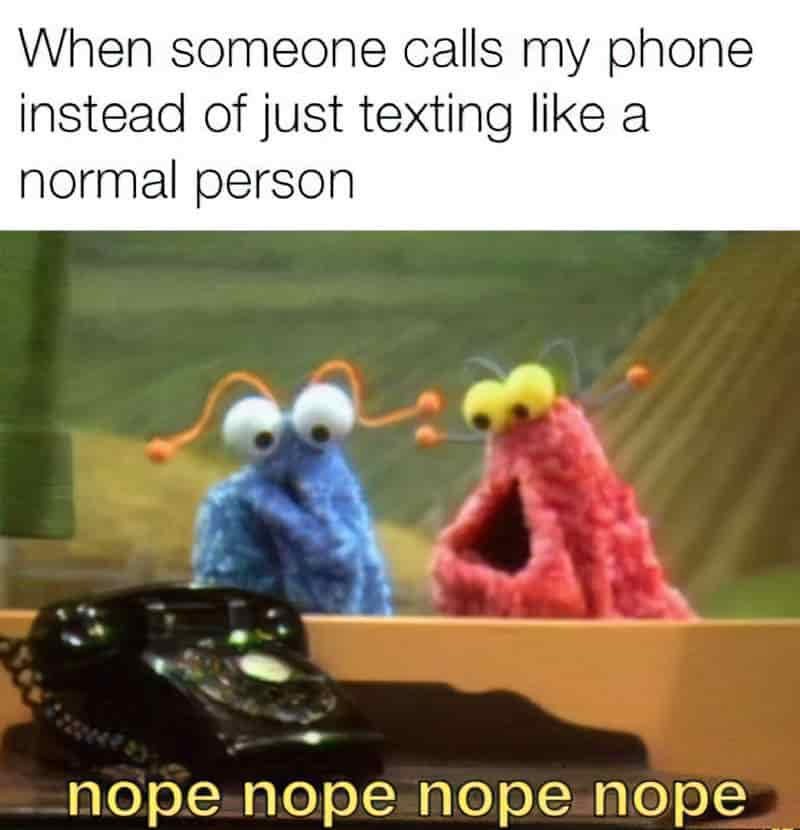

If you look at illustration from the so-called Golden Age (the early 1900s until around 1970), it is mostly women depicted chatting on the phone. Frequently they are posed as if speaking to a romantic interest. Sometimes the illustration strongly suggests they are using the phone to gossip. Either way, the freedom afforded young women by the telephone was clearly a dangerous idea. Young women could no longer be controlled by their fathers and brothers as they had been before. They could be chatting to a suitor and no one would know about it! How awful. We all know boys will be boys, and young women must be protected from their charms…
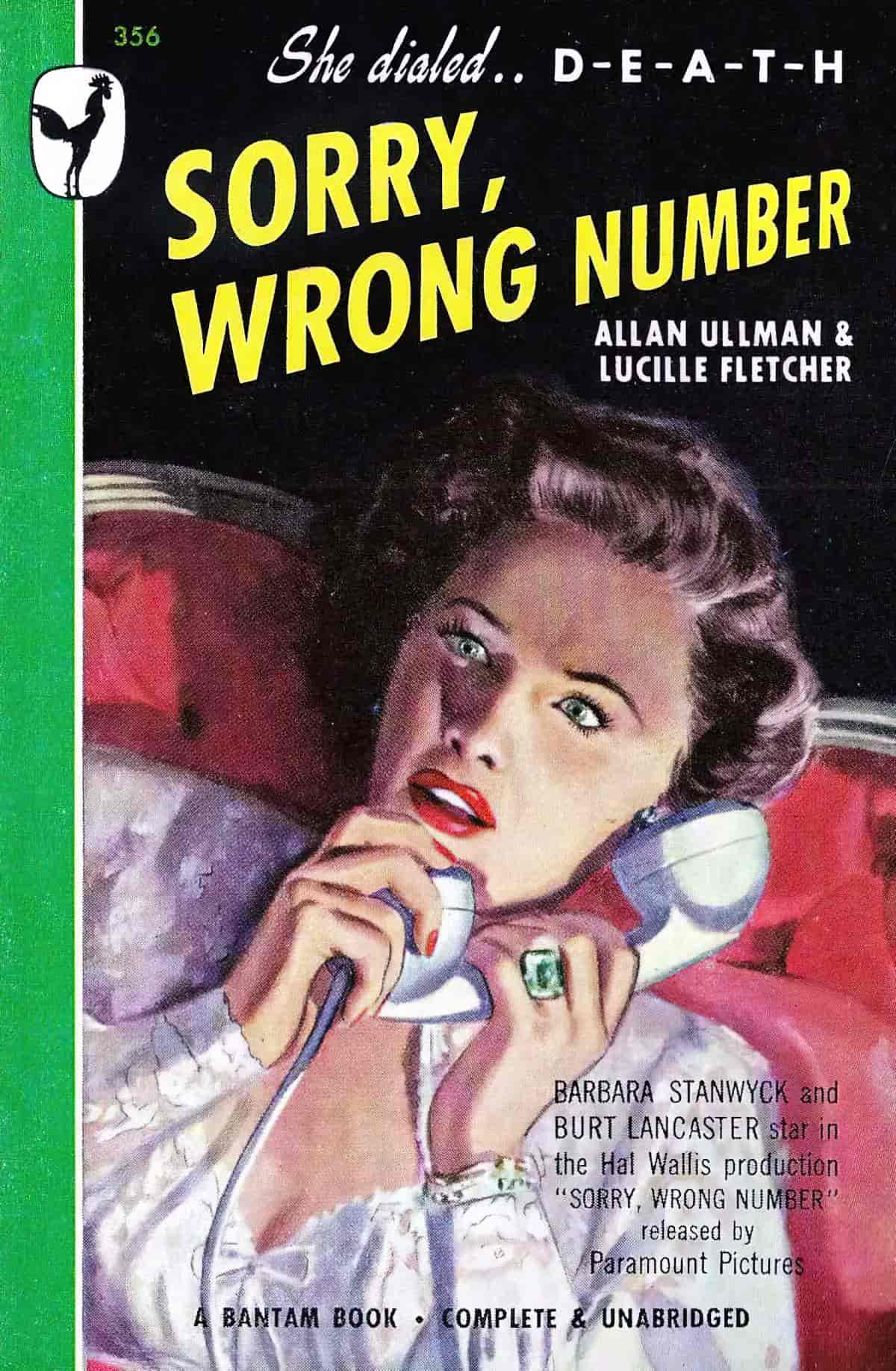
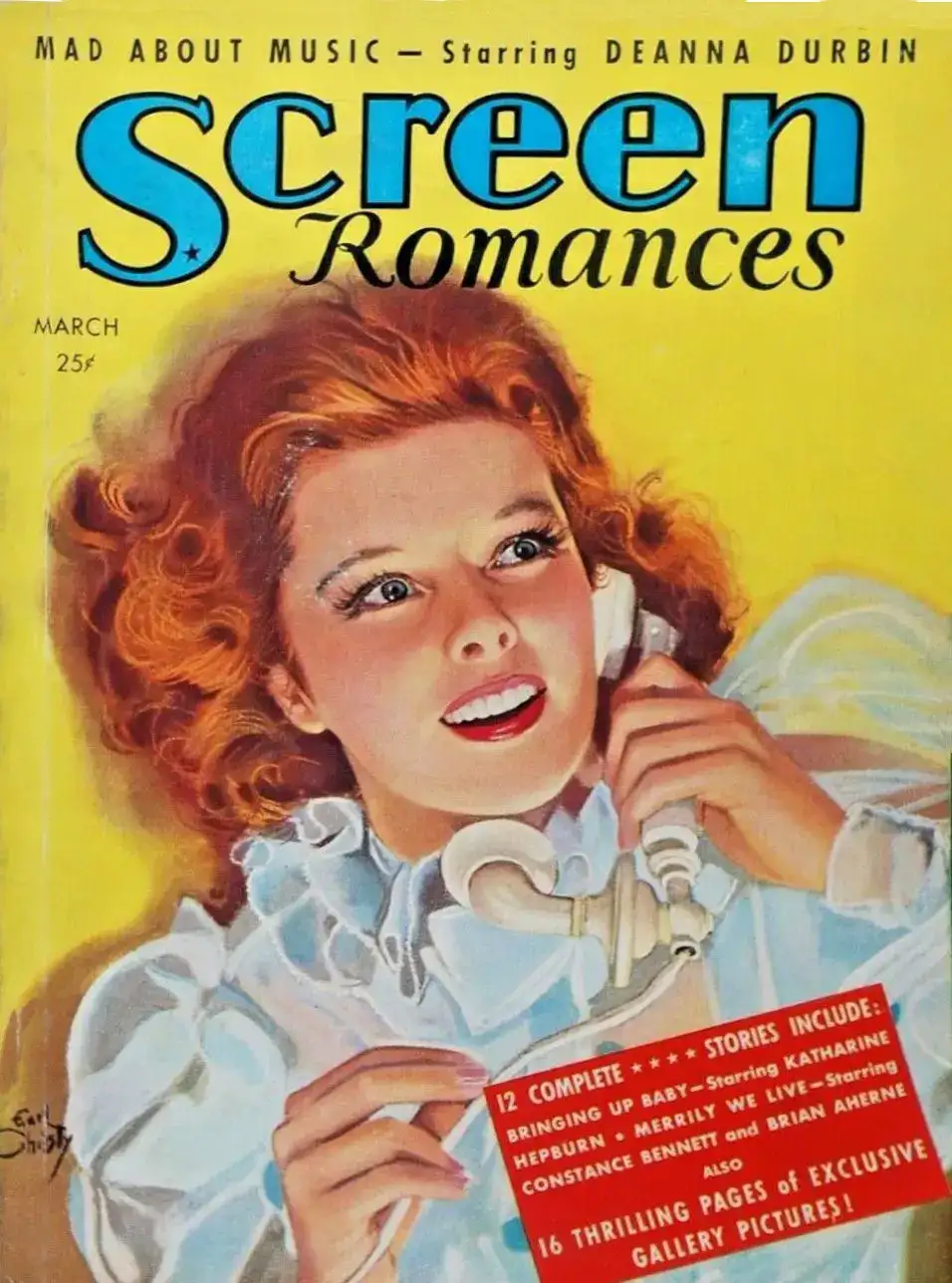
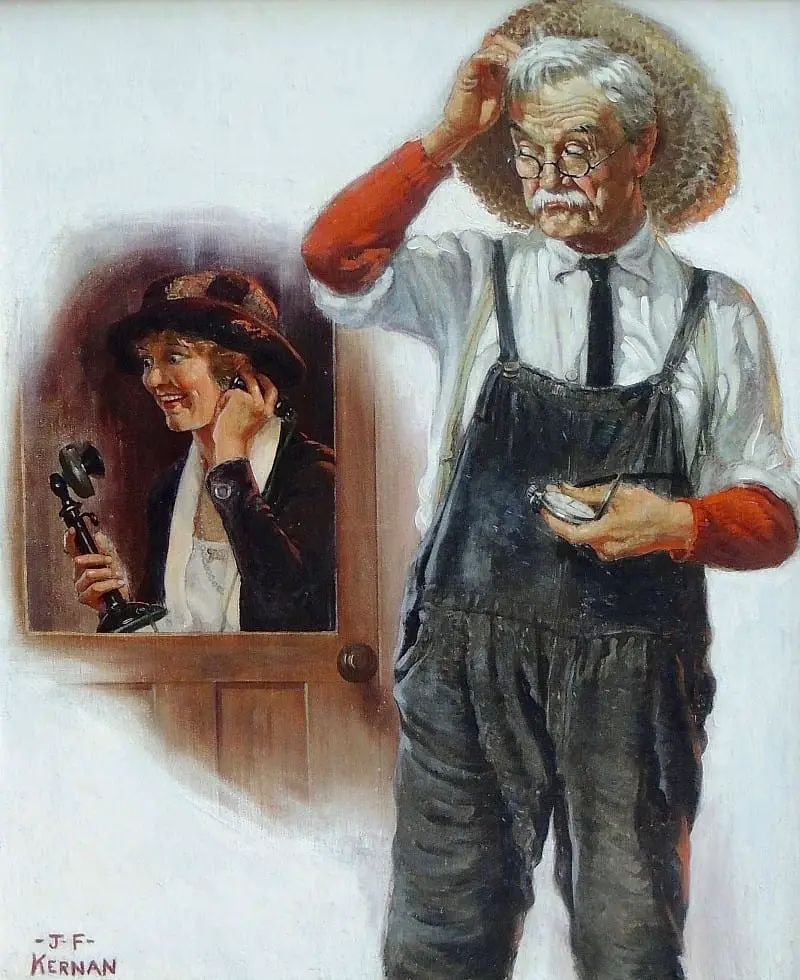
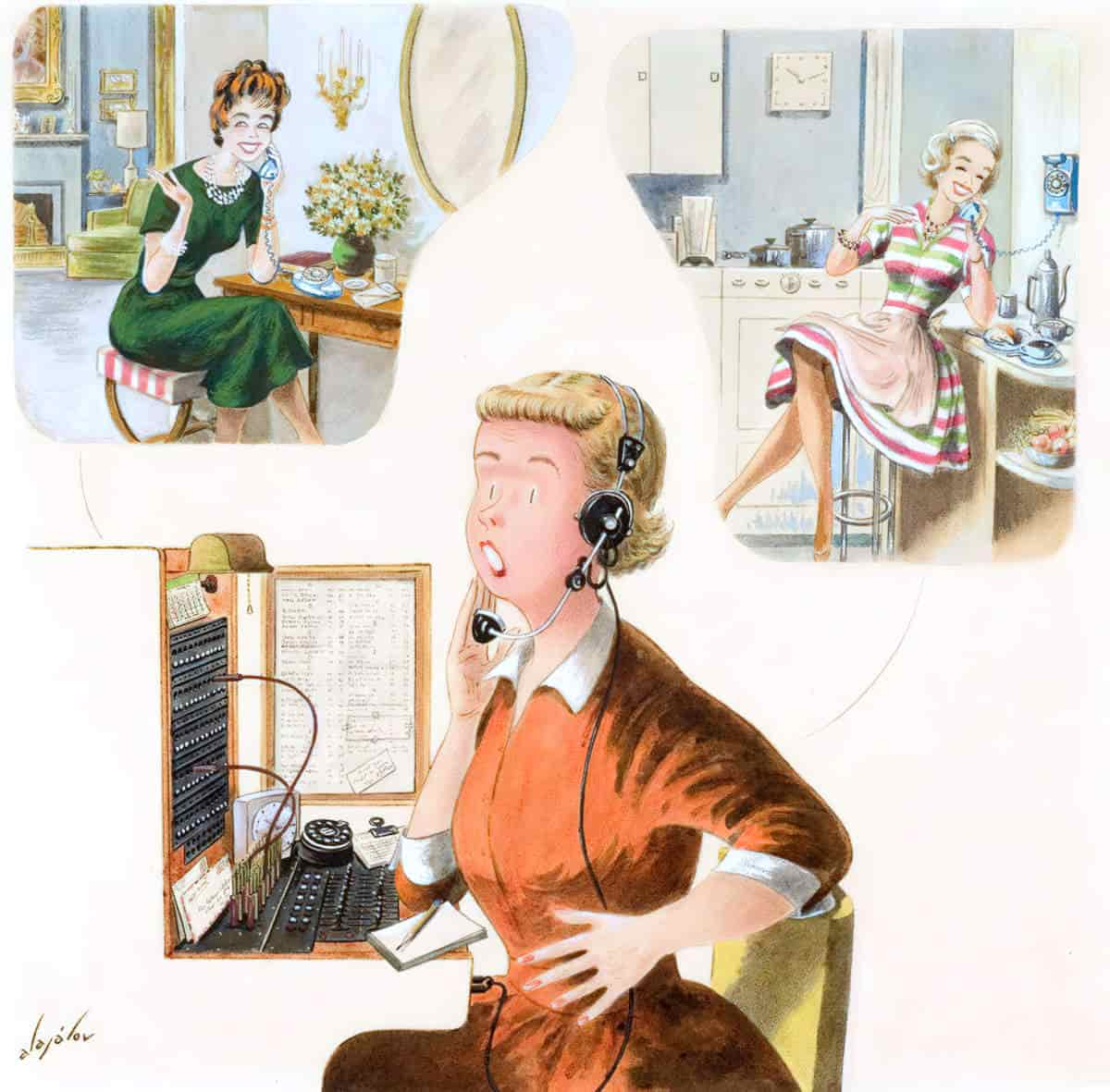
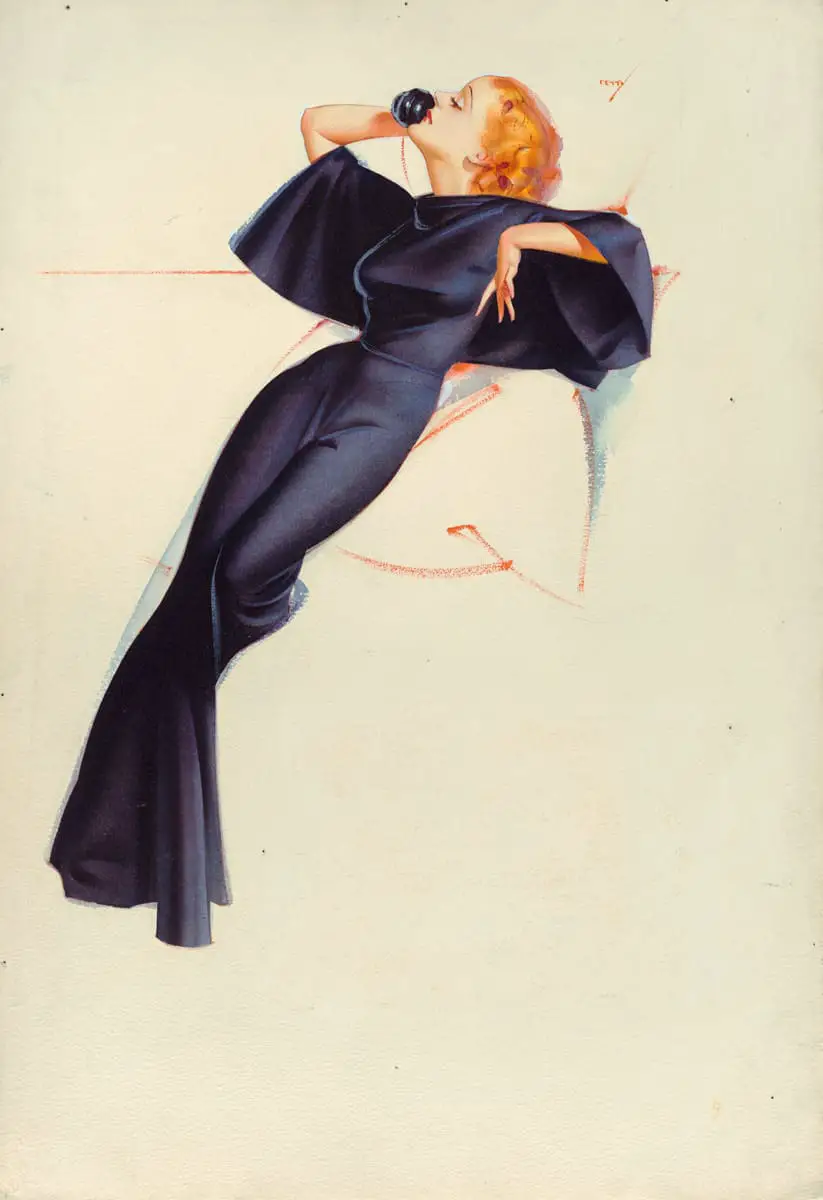
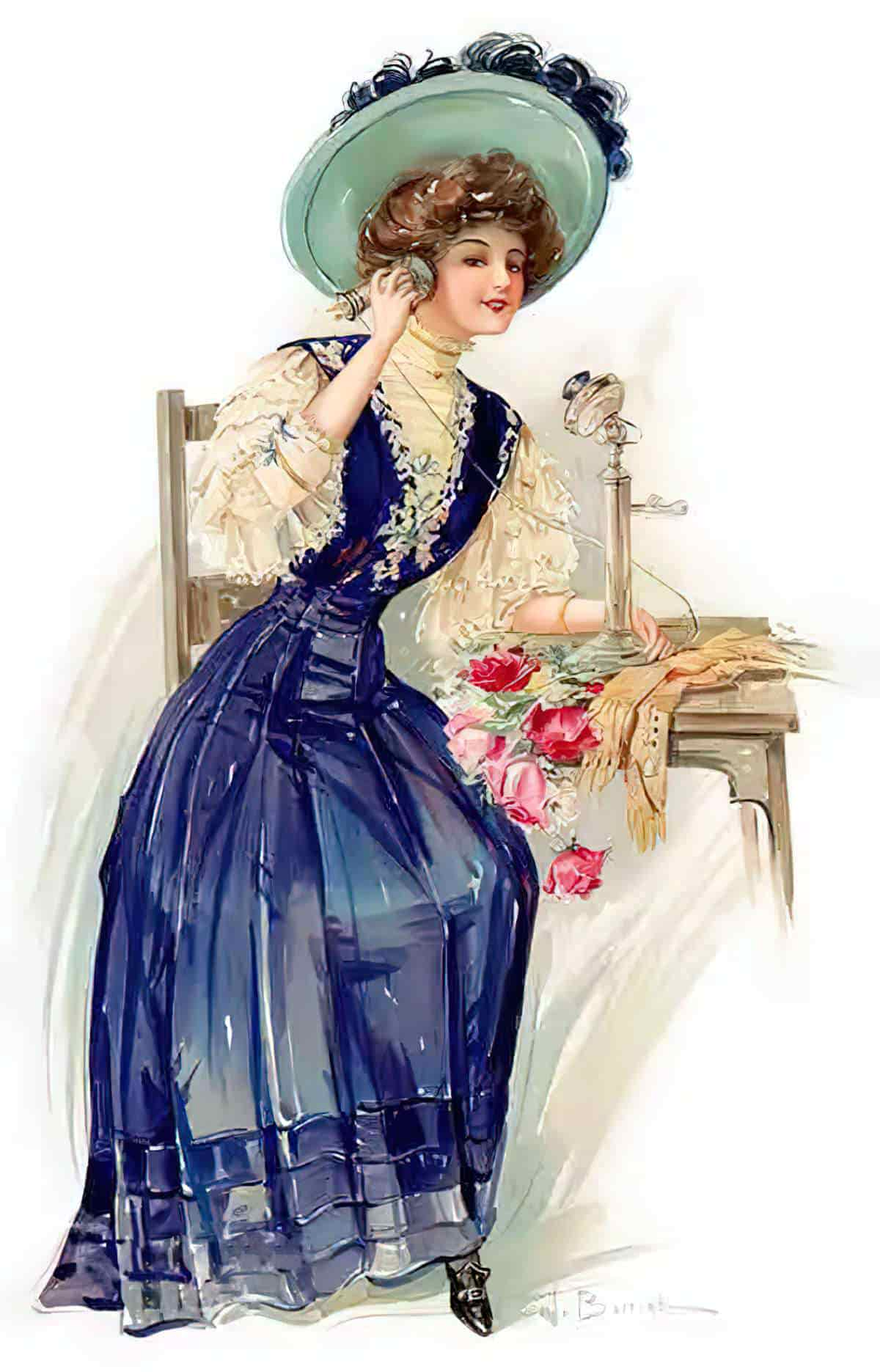
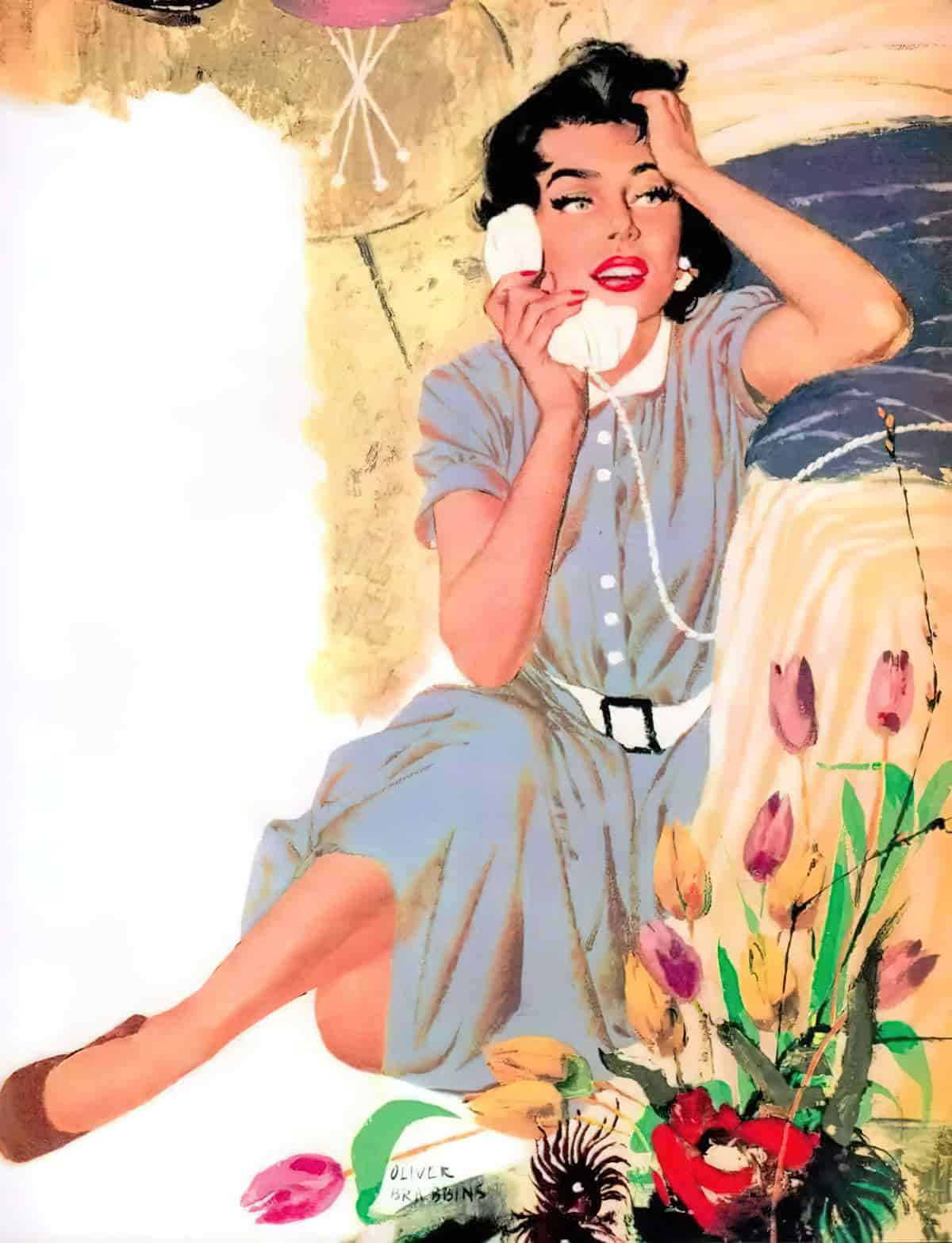
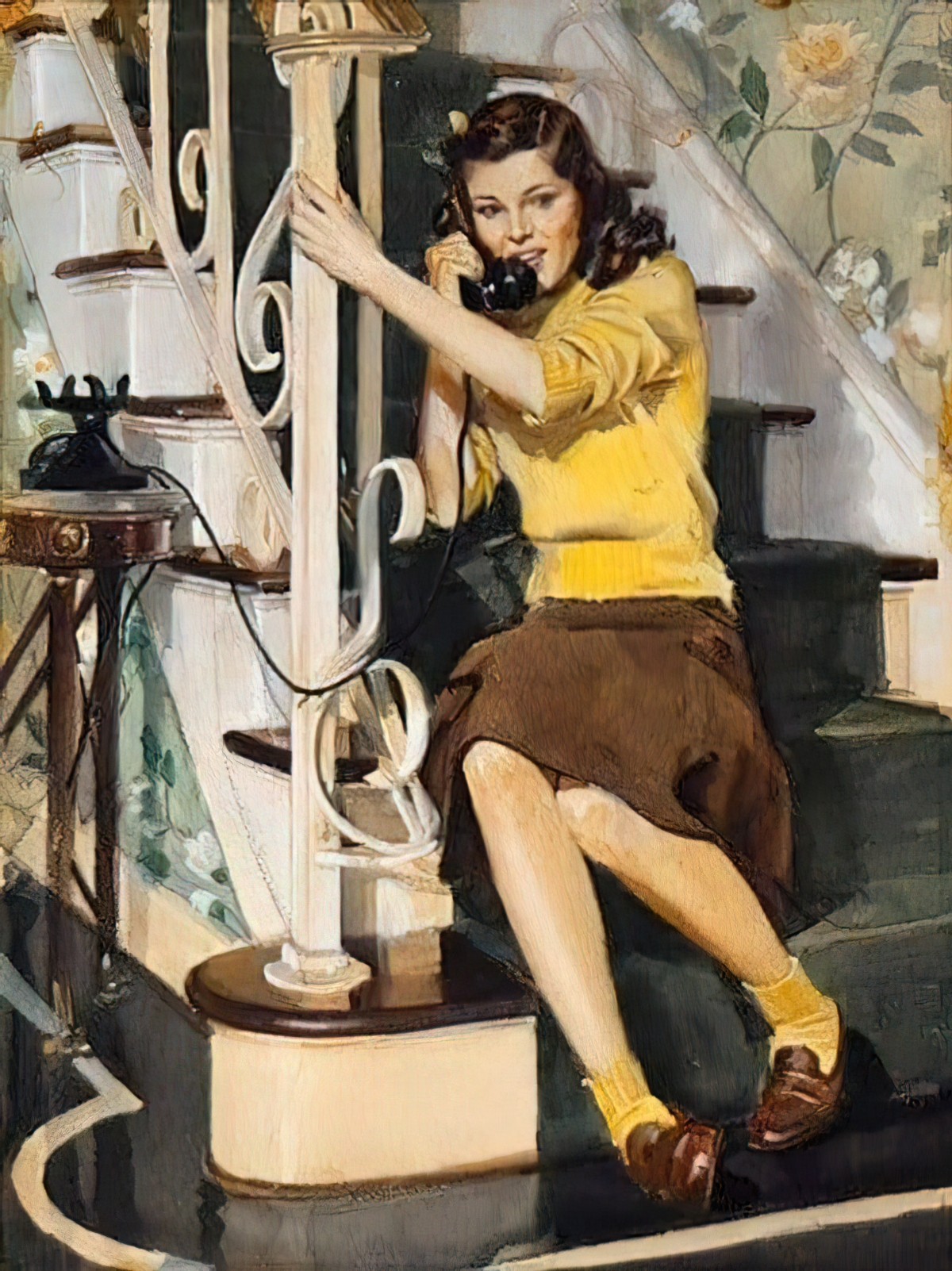
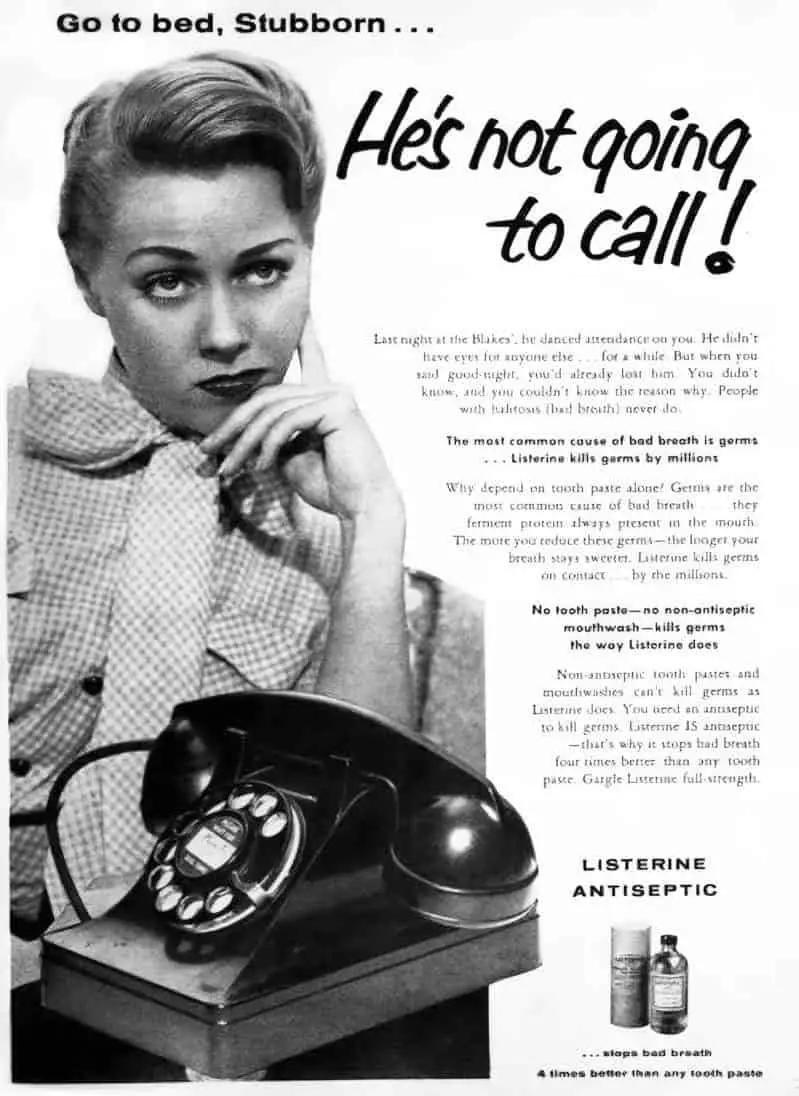
Sure, the telephone is a safety line to the outside world, but it is also a weak point of the house — like the fabled chimney of yore — an opening which helps to prevent house fires, but which can unfortunately admit witches, demons and so on. (The Santa Claus story is an attempt to sanctify demons to comfort children. More generally, if someone’s coming down your chimney, they’re bad news.)
I believe a misogynistic fear of girls and women enjoying a private line to the outside world outside the home partly explains why the telephone call in the urban legend of the babysitter works so well. Frequently in stories, babysitters immediately invite their boyfriends over. The trope hasn’t died. It was used quite recently in the children’s animated feature film Monster House.
These young women in babysitter stories who utilise a home telephone to call their boyfriends and make use of the bedrooms are the Bad Babysitters. If they’re canoodling with boyfriends, they’re obviously not supervising your children, because the Good Woman Bad Woman is a binary. A girl/woman cannot be both sexual and maternal.
The Good Babysitter is a particularly alluring version of the Good Woman: beautiful, but nonetheless interested in your children. She features prominently in age-gap fantasies (which is beyond the scope of this article). She has a “natural” maternal instinct. But because of her sexual attractiveness, she’s still a risk to your children’s safety, sometimes through no fault of her own. That’s because she’s a target for Bad Men. The Bad Man of the babysitter urban legend is a Minotaur opponent. We don’t know anything about him, what drives him. He’s simply a psychopath and possibly a sadlst. The young babysitter is a watered-down threat compared to the Evil Nanny trope, seen in popular narratives such as The Hand That Rocks The Cradle (1992).
Babysitter stories aside, the scary telephone is a feature of many, many horror stories set in the domestic sphere. Here’s the cover copy for another teen horror from the 1980s, Trick or Treat by Richie Tankersley Cusick (1989):
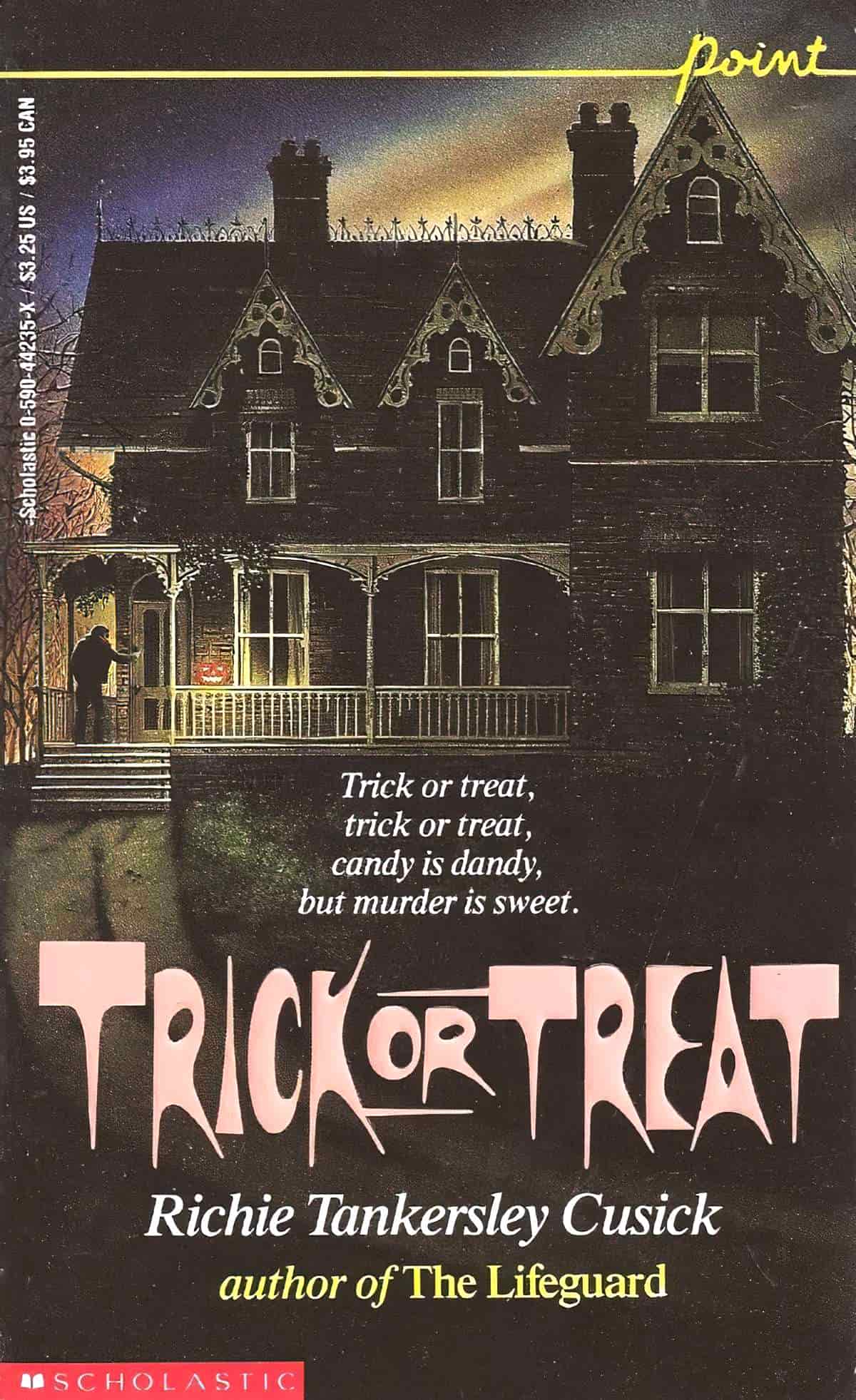
From the author of The Lifeguard comes the exciting suspense novel about Martha. Not long after Martha moved into the Bedford house, the phone calls began: Trick or treat, Martha. You’re dead.
Elizabeth Bedford had been murdered one year earlier, on Halloween night, in the very same room. The murderer was never found, and now the killer is back–for Martha.
The phone is not always used for evil by girls and women, of course. Men can use phones to conduct their extramarital affairs. Yet it so often happens that even when the man is doing bad, it’s still a woman she-monster who upsets the family unit. Take the notorious anti-woman film Fatal Attraction of 1987:
A writer takes his wife to the station in the morning with their child and sees them off. Then he picks up the phone and rings a girl whose number he’s got. He takes her out to dinner, takes her to bed. He thinks that’s the end of it, but the phone rings the next day and it’s her. So he goes over to see her and spends Sunday with her. And Sunday evening she freaks out completely and cuts her wrists … He stays the second night and gets home early in the morning. His wife gets back. The phone rings and it’s the girl. He fobs her off and the phone rings again and the wife goes to pick up the phone and you know that’s going to be it. She’s going to find out about the affair. The wife picks up the phone and says hello, and the screen goes black.
Screenwriter and producer James Deardon describing the plot of Fatal Attraction (1987)
As Susan Faludi details very well in her book Backlash, James Deardon intended to write a feminist movie, but was pressured to make the husband more sympathetic and the woman more evil with each rewrite. He always maintained, however, that he had achieved his goal of writing a feminist film.
SNAKES AND THE TELEPHONE

Sometimes the telephone is presented as an almost alive thing, its cord snakelike. The old corded wall telephones are associated with women in another snake-ish way: Women talking to characters they shouldn’t is at least as old as the story of Lilith and Eve in the Garden of Eden, taken in by that evil serpent.
The vintage telephone can be depicted by artists in an ominous way. I very much doubt the person waiting for the phone call in Russian painting “Waiting” below will hear anything; if the receiver’s off the hook, anyone calling will simply get an engaged tone. However, the ominous vibe rings through loud and clear:
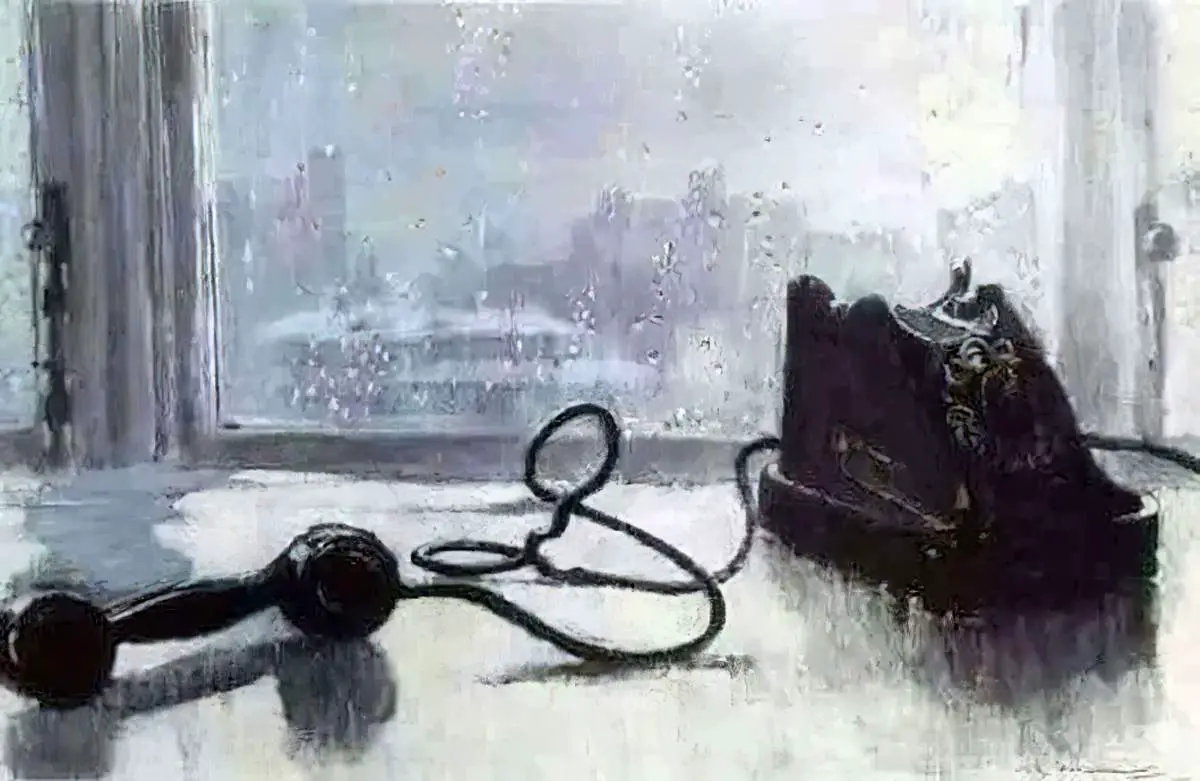
TV Tropes keeps a list of Phone Tropes. Some of them are new since the era of mobile phones e.g. Cell Phones Are Useless: To avoid plot holes, cell phones fail far more than they should.
See: The Calls Are Coming from Inside the House for a modern variant of the babysitter urban legend, which is so old, earliest versions required the babysitter to call an operator. These were the days when homes had only one line. To have more than one is wholly unexpected. Perhaps the family ran a home business (a plumber, perhaps, with a wife who does the books) and they have a separate line for business? Before cell phones, I see no other way an operator could tell the babysitter the call is coming from inside the house.
THE BABYSITTER URBAN LEGEND ON SCREEN AND IN BOOKS
Now let’s take a look at various versions of the babysitter urban legend repurposed for film and novels.
OBSERVATIONS
- Where there is more than one girl in the story, one is the Light (Good) Woman, the other is the Dark (Bad) Woman.
- Bad babysitters are more interested in pursuing sex than in looking after someone else’s children.
- But good babysitters are also a liability because they are sitting ducks. Modern Little Red Caps. (Instead of a red cap, their attractiveness is their downfall.)
- Where babysitter stories are aimed at, or meant to include boys in its readership, the boy is frequently annoyed. It is difficult for an adolescent boy to accept that the sort of girl he looks to as attractive is being put in the motherly role. He may prank her in a little-brother kind of way. When it comes to babysitting stories, the “boys will be boys” acceptance of bad behaviour lets male characters off easy.
- Phones are pretty much mandatory in a babysitter story.
- During second wave feminism, young woman as pure victim was inverted to the point where she at least survived. At least, the Light Woman survived. As for the girls who were never going to make good mothers anyway? Those girls were expendable.
- Statistics are clear: the biggest threat to a woman or child in the home is the man she lives with. A babysitter feels less personally threatening when the baddie is a Joseph James DeAngelo-type villain.
- In this way, a babysitter story can appeal to young women (the victim) as well as other demographics. But it’s likely the fear works differently. A young woman is on constant alert for her own personal safety when in the presence of strangers. Parents who leave their children in the hands of a young woman will be worried about her ability to take care of herself insofar as it impacts the safety of their children and home. Another type of audience is there for the vicarious thrill of a nubile young woman stalked and murdered.
- Children’s stories are more likely to put the power back in the hands of the young babysitters, notably the Babysitter’s Club of the 1980s, which has recently been revived thanks to several adaptations: Graphic novels and a Netflix series.
- If a children’s series of books runs long enough, eventually a story featuring a babysitter will become part of the stable. The transition from being babysat to looking after oneself is an important adolescent transition in the West.
CASE STUDY: SHORT FILM FOSTER’S RELEASE (1971)
Foster’s Release is a short movie (fourteen minutes in color), a literal dramatization of the threatened babysitter story, a common urban legend type. A Verexal Production, the film is based on a screenplay by Stephen Alec Lorimer.
The film introduces us to Foster immediately–a scruffy, greasy young man swigging from a bottle and retrieving a cigarette butt from the street. The unpleasant-looking fellow eventually stares at us directly in full face close up. He then hitches a ride from a passing car.
The next scene presents us with the heroine, Julie, a pert teenager who is discussing a difference of opinion with her boyfriend, Phil. Julie gets out of Phil’s car and parental voice-overs concerning last-minute babysitting instructions accompany the film’s credits.
The remainder of the film action deals with Julie’s babysitting nightmare. We gradually learn through phone conversations between Julie and Phil that the couple does not agree about the nature of their romantic relationship. The problem, although never fully clarified, seems to be that Phil is ready for a sexual liaison. (“It would do our relationship a lot of good”). He would like “to come over to practice the big event, whenever that’ll occur.”
Phone call one is innocent enough. It is Phil importuning Julie for a decision on his proposition.
Phone call two seems, at first, to be Phil. Julie accuses the heavy breather of joking. We recognize the caller’s sweaty face in the next shot. It is Foster who breathes into the receiver and listens intently. When phone call three rings, we are relieved that it is Phil again.
As Julie seductively eats a banana, she tells him of the strange phone call. “With your pretty voice you could make anybody breathe hard,” Phil responds. Foster, in close-up, seems to agree. Call four is not so pleasant. Foster breathes, listens, and mutters into the receiver.
Julie chain-locks the door, checks the windows, and reports the call to the switchboard superintendent, who promises to trace the source if Julie can keep the caller on the line during the next harassment. Call five interrupts Julie’s nap. It is Phil, who is drunk and jokes about Julie’s “asthmatic friend”.
Call six gives close-ups of Foster’s tongue on the telephone receiver, Julie’s attempt to keep him on the line, and the superintendent’s warning to Julie: “He’s in the house with you. Get out of the house!” The last few suspenseful minutes of the film are cleverly edited and intensified by effective assault music. Julie fumbles with the chain-lock on the front door.
Foster storms down the steps. Julie runs upstairs to retrieve her young charge, and Foster chases after her, now armed with a long knife. The sitter, carrying the child, eludes him down the stairs, and he gives chase.
Quick-thinking Julie then smashes his face with an unexpected swing of the refrigerator freezer door and runs out of the house with the child to face several police cars.
Foster stumbles after, raises the knife, and is shot to death in a gory finale.
Danielson, Larry. “Folklore and Film: Some Thoughts on Baughman Z500-599.” Western Folklore, vol. 38, no. 3, 1979, pp. 209–19. JSTOR
Where this short film departs from the usual orally transmitted urban legends of the story:
- We are introduced to the villain right away in close up, face-to-face.
- The boyfriend calling
- The babysitter and child escape
- The villain is punished
Narratives such as the entrapped babysitter, whether depicted in popular film or related in oral tradition, do not serve single functions, overt or covert, although some patterns of psychological response may emerge as more important than others.
Danielson, Larry. “Folklore and Film: Some Thoughts on Baughman Z500-599.” Western Folklore, vol. 38, no. 3, 1979, pp. 209–19. JSTOR
CASE STUDY: JOHN CARPENTER’S HALLOWEEN (1978)
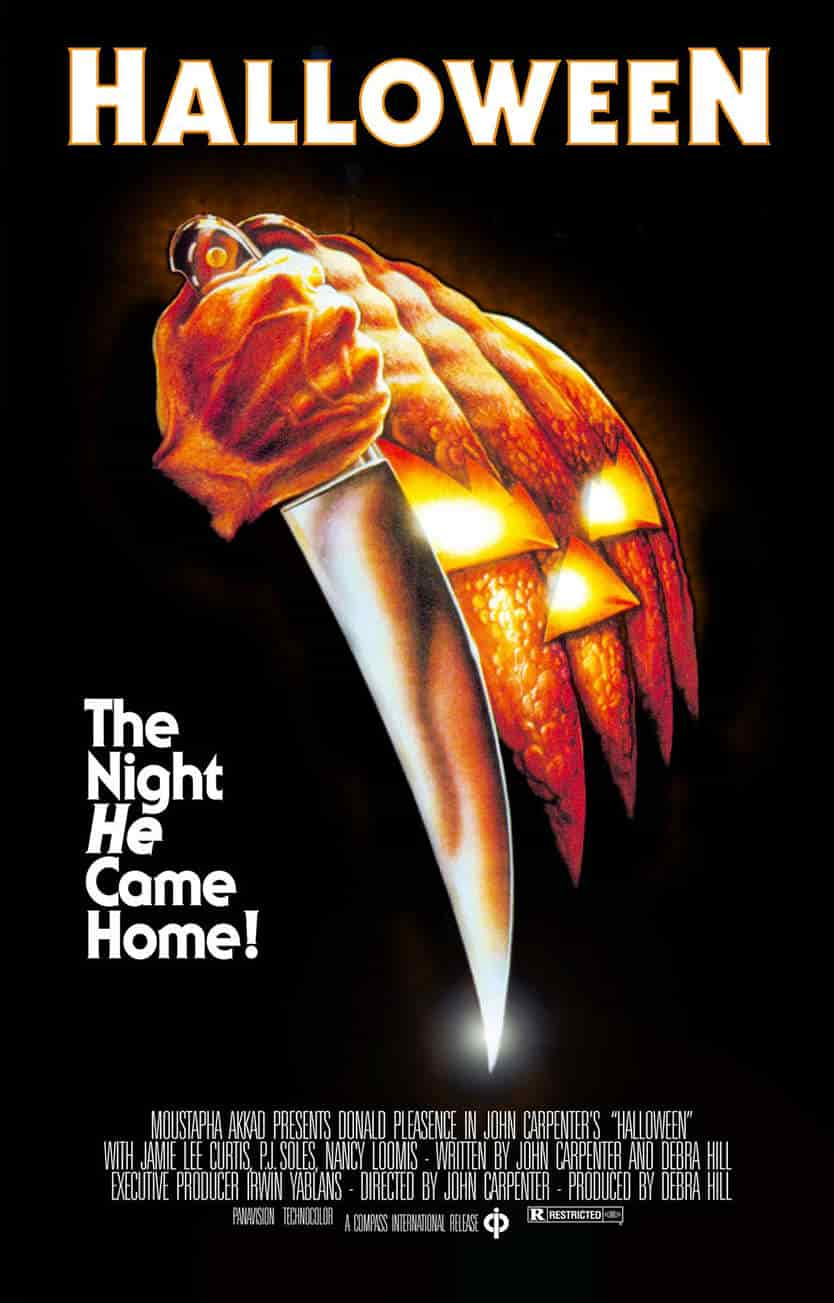
HALLOWEEN
Halloween was John Carpenter’s third feature film, shot on a shoestring budget in just 20 days. It soon achieved cult status.
“The night HE came back.”
An escaped lunatic preys on adolescents who are more concerned about having sex than about their own personal safety.
The specific setting (Haddonfield, Illinois, 1963) suggests this could be based on a true story. A lunatic knife-murders a young woman who has just had sex. He is just eight years old.
He returns to commit more crime in 1978, as a fully-grown man.
Halloween features babysitting as an especially vulnerable time for young women. A virginal young woman played by Jamie Lee Curtis is babysitting on Halloween, though she was worried about taking on this job having seen a white masked man around the neighbourhood. Neither her parents nor the people who employ her for the gig seem to care a jot about the serial predator in their midst. However, this is an urban legend, and we must not ask questions. Urban legends, like fairy tales, do not have narrative logic.
Across the road, another young woman, Annie, is also babysitting.
The nightmarish figure lurks in the shadows, peeping into a kitchen window, watching through a laundry door. He strangles a dog because it barks. All of this is filmed in a travelling shot. We never know whether we are watching these young women from the killer’s point of view or not. This creates an unsettling audience experience.
Depicted as the irresponsible Bad Babysitter (Bad Woman), Annie is his first victim. She’s horny and keen to pick up her boyfriend. Frequently in conservative stories, women who are sexual are punished for it. Upon entering her car, she notices the condensation of someone’s breath on her interior window. The villain attacks her from the back seat.
Another young woman, Lynda, brings her boyfriend to the house where Annie had been babysitting, hoping to make use of one of its bedrooms. Annie is nowhere to be found. She calls Laurie across the road and learn that Laurie is looking after the kid Annie was meant to be babysitting. The young lovers get on with things, oblivious to the dangerous predator nearby. When the boyfriend goes downstairs to steal a beer from the fridge, he is murdered. The killer goes upstairs, murders Lynda as well.
Across the road, Laurie starts to get creeped out. She investigates her friend and finds the murdered bodies.
The next sequence involves Laurie’s narrow escape from the maniac. At one point she stabs him with a knitting needle, an unambiguously feminine symbol appropriate for the second wave of feminism happening at the time. Repression can get in the bin; she’ll repurpose that knitting needle to save herself. Next she makes use of a coat hanger after he bashes into a locked closet. The audience may be screaming at this point that she shouldn’t have tried to seek refuge in the closet, but I’d challenge anyone to come up with a better idea.
Like the knitting needle, the coathanger is a feminine-associated object, because women have long been responsible for sewing, mending and laundering clothes. There is also a strong connection to reproductive freedom, with the coathanger being a gruesome symbol of backyard abortions. Laurie repurposes it for assault against a man.
A Doctor Loomis has been bookending this story, keeping watch on the neighbourhood. Like the huntsman/woodcutter in various versions of Little Red Riding Hood he’s right there to save the day, even though Laurie has, entirely by herself, managed to evade her attacker using the most unlikely of tools. Dr Loomis puts six bullets in the guy just as Laurie is about to be strangled.
Like a typical horror villain, six bullets don’t kill him, though. He’s basically a machine. When the camera returns to the lawn where he was shot, the body has up and left.
THE BABYSITTER SERIES BY R.L. STINE (1989 – 1995)
THE BABYSITTER 1989
For a full breakdown of this book, listen to Episode 9 of the Teenage Scream podcast.
Jenny Jeffers features in all four of Stine’s Babysitter books. In book one, Jenny is at the mall when she finds little Donny Hagen about to fall in the water fountain. Donny’s mother and father are nowhere to be found. When they do eventually find Donny, with Jenny looking after him, they offer Jenny a babysitting job on the spot.
It doesn’t seem to worry these parents that there’s a babysitter predator on the loose.
Being for younger young adult readers in the Point Horror line, R.L. Stine’s Babysitter is mystery rather than slasher, but recall Halloween the film has barely any gore in it also.
Like the Halloween movie, there’s a known predator on the loose with a predilection for babysitters. (Why babysitters? Why not young women home alone more broadly? Who knows.)
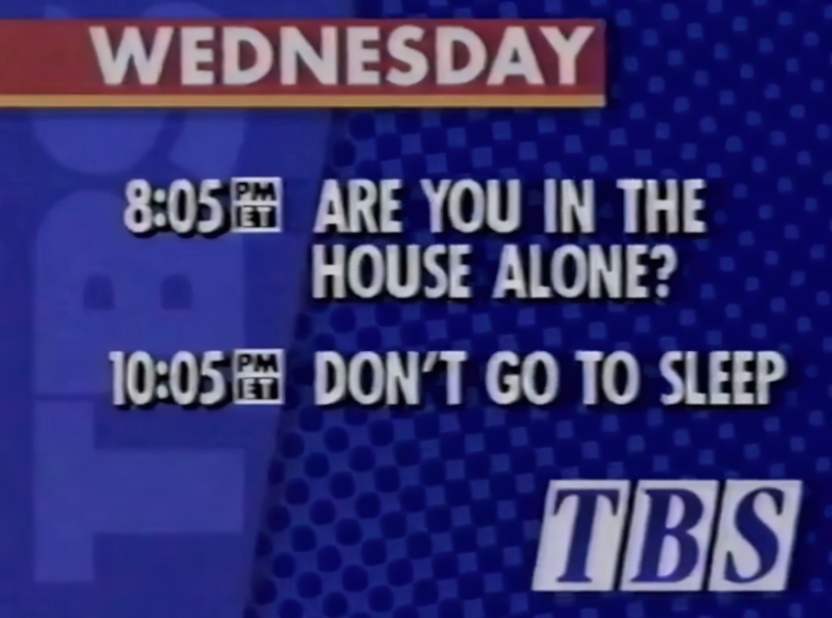
Newspaper headline: THIRD BABYSITTER ATTACK HAS POLICE ON ALERT.
But the moral lessons are familiar: Babysitters beware.
- Lock the house securely
- Don’t invite friends over (especially romantic interests)
- Don’t let your guard down. Be especially careful about answering the phone.
- Don’t be like Jenny. Instead of relying on whatever terrible thing you think might happen, focus on what’s really happening around you.
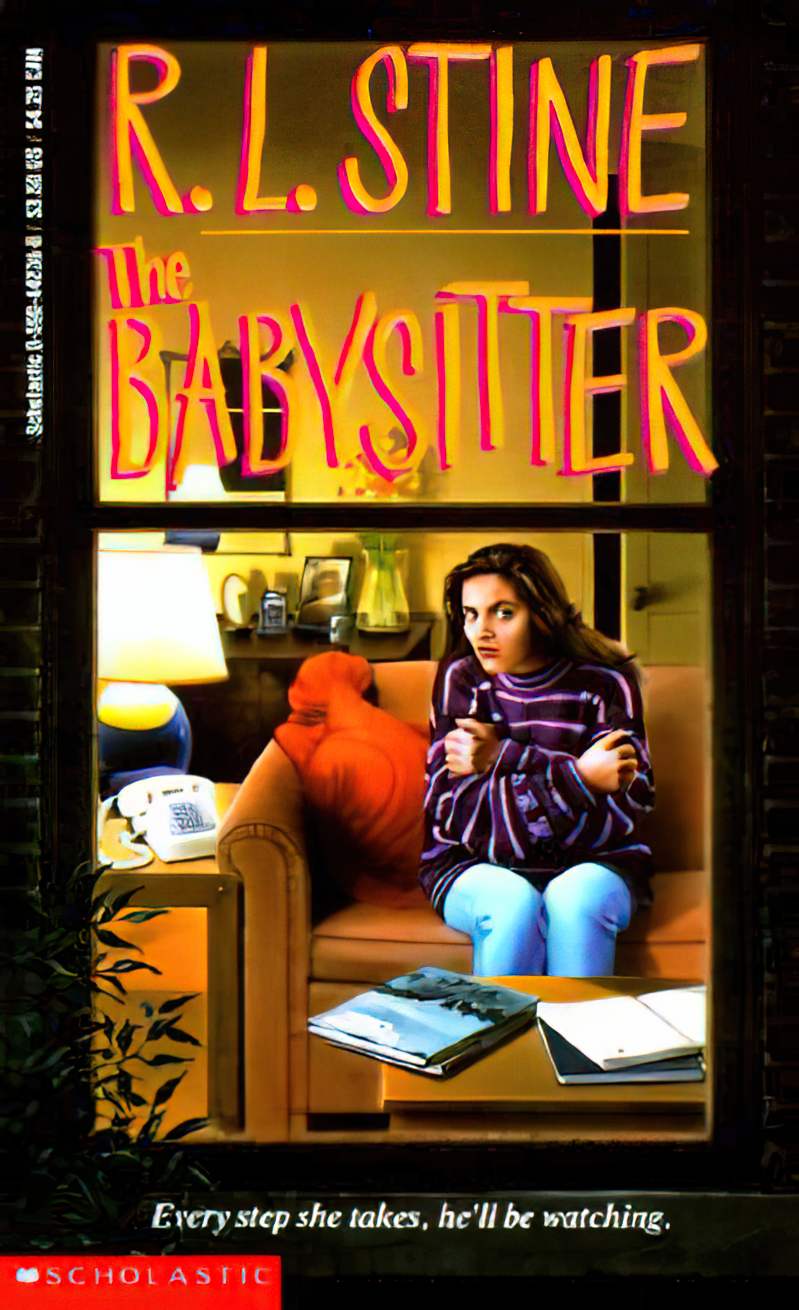
“For Jenny, baby-sitting is like one bad dream after another. From her first job at the Hagen sitting jobs she takes haunted by someone evil, calling her on phone… trying to scare her… to death.”
The killer is Donny’s father, who has a traumatic back story: He supposedly went a bit crazy after his daughter died while with a babysitter. He throws himself into a quarry but there’s no body, which is handy for sequels.
I think as a kid I assumed the bad guy was going to be a stranger, because it was the 80’s and we were Stranger Danger all the way. It never occurred to me that you could actually know a villain so R.L. Stine probably didn’t even need to include any red herrings to fool me.
consumer review
I finished reading the last page, and I was like, ‘Really? That’s it?’. I also couldn’t believe that Mrs. Hagan knew her husband was unstable and beat their last babysitter to a bloody pulp, yet she still thinks it’s ok for him to be driving Jenny home.
consumer review
I love that Stine makes everyone look shady as feck, aside from the person who ends up being the bad guy.
consumer review
Woo boy this was bad. I think that you of course have to allow for it to be written in the times it was (1989) but there’s a lot of boys will be boys mess going on here. I didn’t like the love interest for the main character because he was a jerk and was doing a great job of gaslighting her. […] Jenny is also trying to work through whether she has feelings for a new boy named Chuck. FYI, Chuck sucks. [..] Chuck is the class clown (he’s an ass).
consumer review
I did not like the female lead at all. She just panics for every single thing, even before she gets the creepy phone calls. Also who in this world kisses someone who they think is stalking and trying to scare them??
consumer review
THE BABYSITTER 2
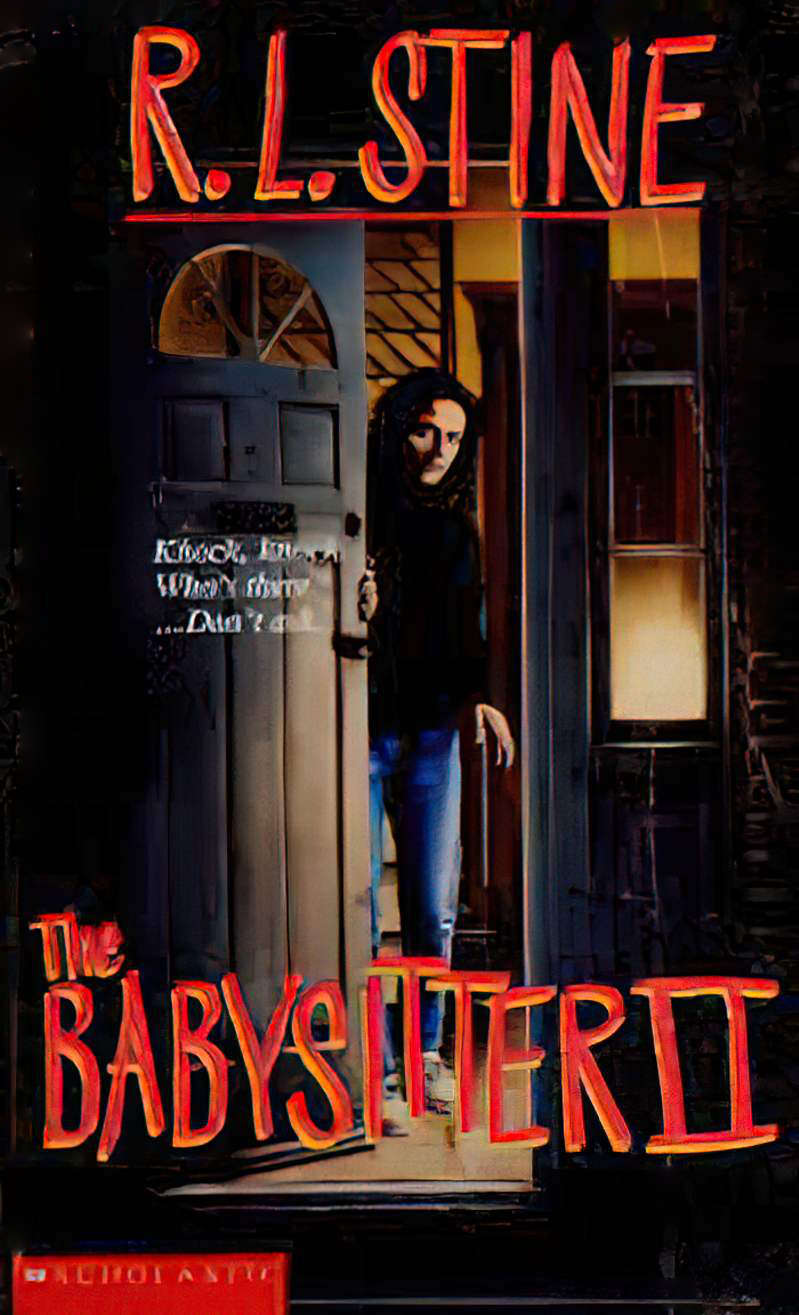
Jenny is traumatised and seeks counselling. She suffers from a recurring dream in which she meets the evil father from the previous book at the abandoned rock quarry. He’s alive, dragging himself out.
To live with her PTSD, Jenny knows she has to get back on the horse, so gets herself another babysitting job. This time she’s babysitting a ten-year-old called Eli. (Also, money is tight.)
Because she’s traumatised on top of having an active imagination she gets scared a lot and keeps running when she doesn’t need to.
The creepy calls are back, whispering the same eerie phrases that Mr. Hagen had.
The annoying love interest Chuck is also back. He’s not good at taking rejection, and gets angry between jokes.
Basically the same plot as the first one, but with a woman refusing to get out of the river.
consumer review
The person terrorising her this time is her psychiatrist’s secretary who is jealous of the attention that Jenny is getting.
consumer review
The part with creepy Eli totally throw me off guard because he turn out to be innocent and Mr Gurney is the crazy one after all!
consumer review
Jenny isn’t the only one in need of therapy. The ten year old kid she babysits is nowhere near the only male in this book that is well versed in temper tantrums. The males her age have some serious toxic masculinity happening and Jenny is quick to forgive or ignore all, even the behaviour that’s criminal.
consumer review
Chuck hurls her to the ground and she nearly breaks her skull and she still insists that Chuck is not really a bad guy? … And what happened to Jenny’s best friend Laura? She just vanished after part 1.
consumer review
Jenny is always shouting or shrieking at people.
consumer review
All the main characters are still mind-numbingly stupid and immature and I’m kind of hoping they eventually die in the third book.
consumer review
THE BABYSITTER 3
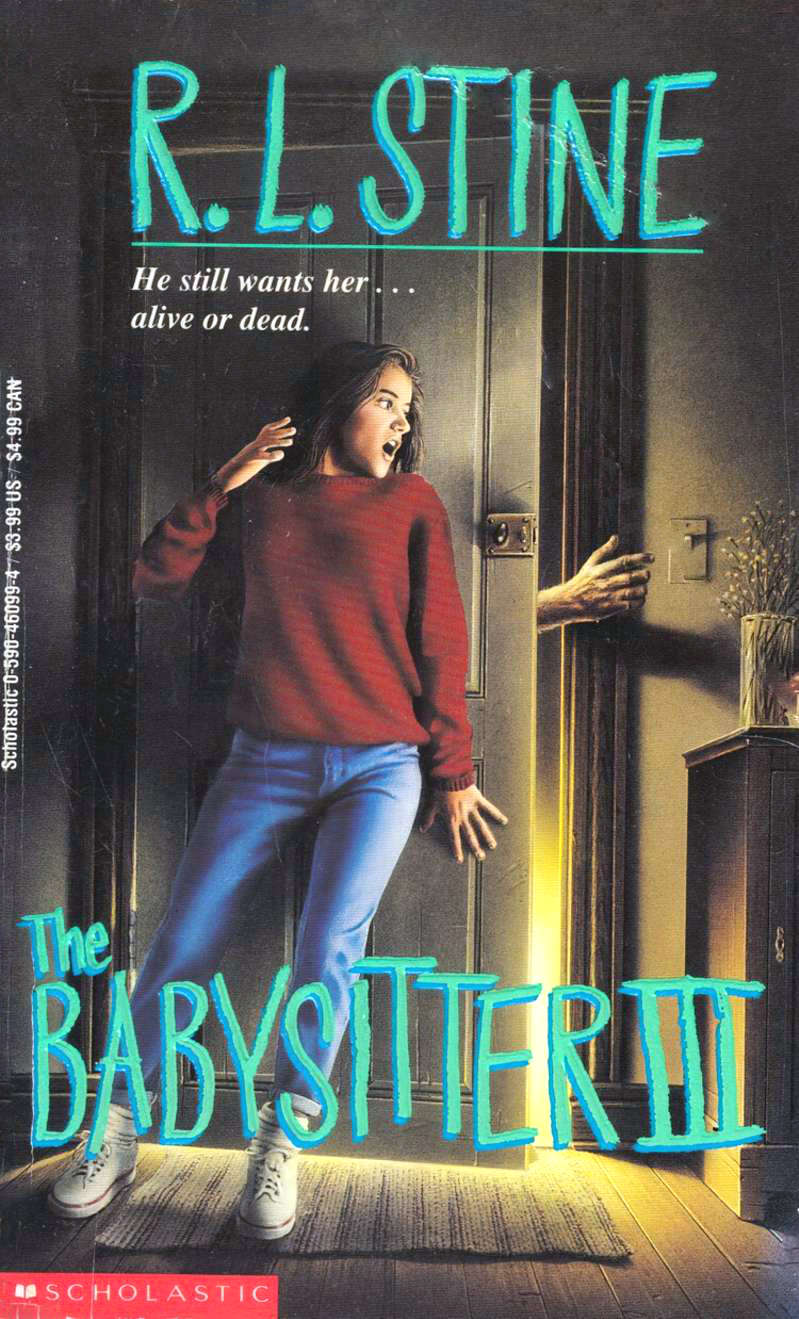
“Jenny the bad-luck baby-sitter is back, visiting her cousin and trying to get away from her haunting past. But her cousin is a baby-sitter too, and it looks like Jenny has brought the nightmare with her.”
I don’t blame Jenny for giving up babysitting. She’s now working at The Doughnut Hole. Her mother notices she is still traumatised, so suggests she go stay with cousin Debra.
Unfortunately, Debra has a babysitting job lined up, and wants Jenny to join her!
This works okay so long as you accept that Jenny is clearly cursed.
The culprit this time is Jenny herself. She snaps, having been driven to it by intrusive thoughts of Mr Hagen.
Debra, whose main interest seems to be tossing her long blonde hair, also needs some assistance in the dating department. Her ex, Don, seems to think it’s entirely acceptable to show up unannounced in her bedroom. Who let him inside the house in the first place? Who knows?!
consumer review
I love that Stine introduces Jenny’s cousin, Debra. Not only is she a main character, but there are actually chapters from her point-of-view, which I believe is the first time we step out of Jenny’s head in this series. It’s quite refreshing to have another perspective, and does a lot to add to the narrative
consumer review
THE BABYSITTER 4 1995
Where could R.L. Stine possibly go from here? Well, he jumps the shark and introduces the supernatural. You could argue he already has, because Jenny is clearly cursed by something (otherwise the coincidence of her successive misfortunes is unbelievable).
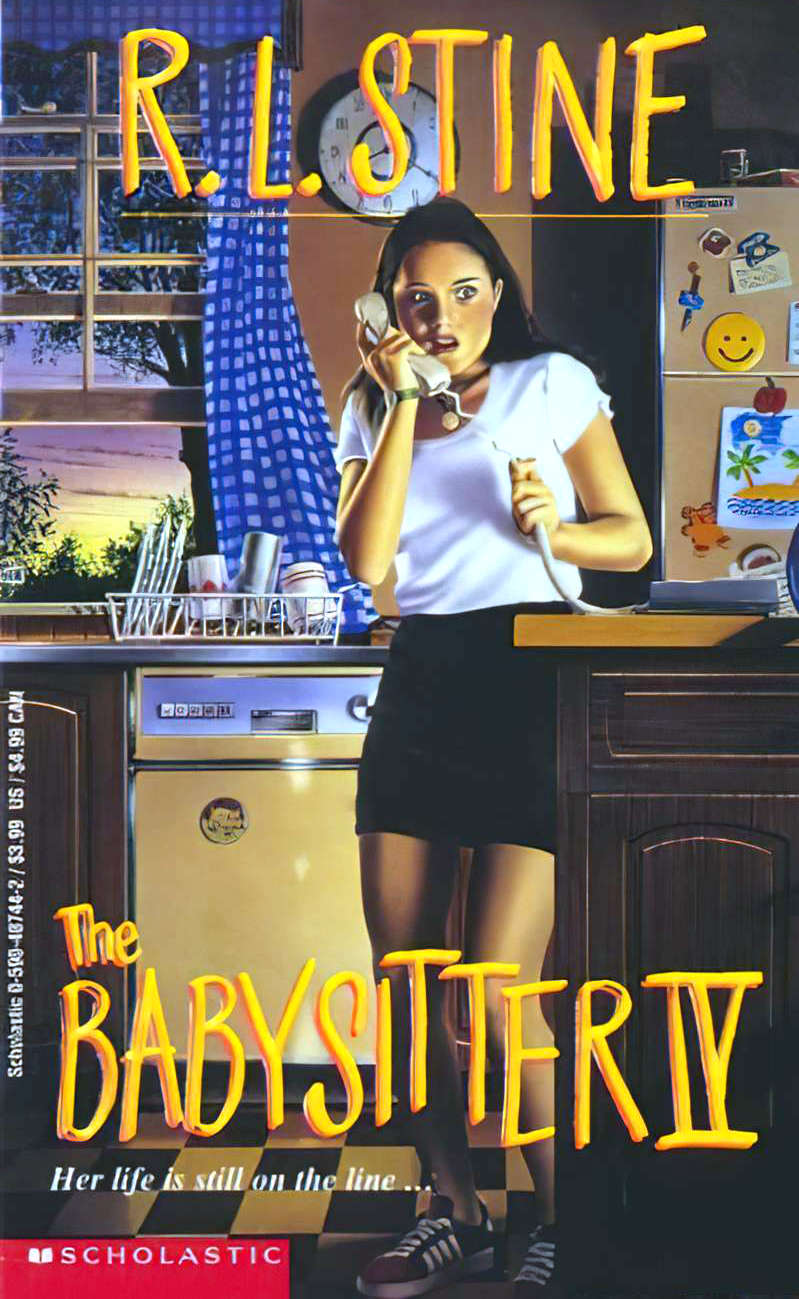
“Don’t live in the past, they say. And Jenny’s trying to forget all of the horrible baby-sitting experiences that landed her in the hospital last year.
Now Jenny lives in a new neighbourhood, and the neighbour has asked her to baby-sit. If only she could say no. Because someone is watching Jenny–someone who hates baby-sitters.”
This time Jenny receives the threatening messages from… ghosts. She’s been babysitting four kids, but turns out the family only has two!
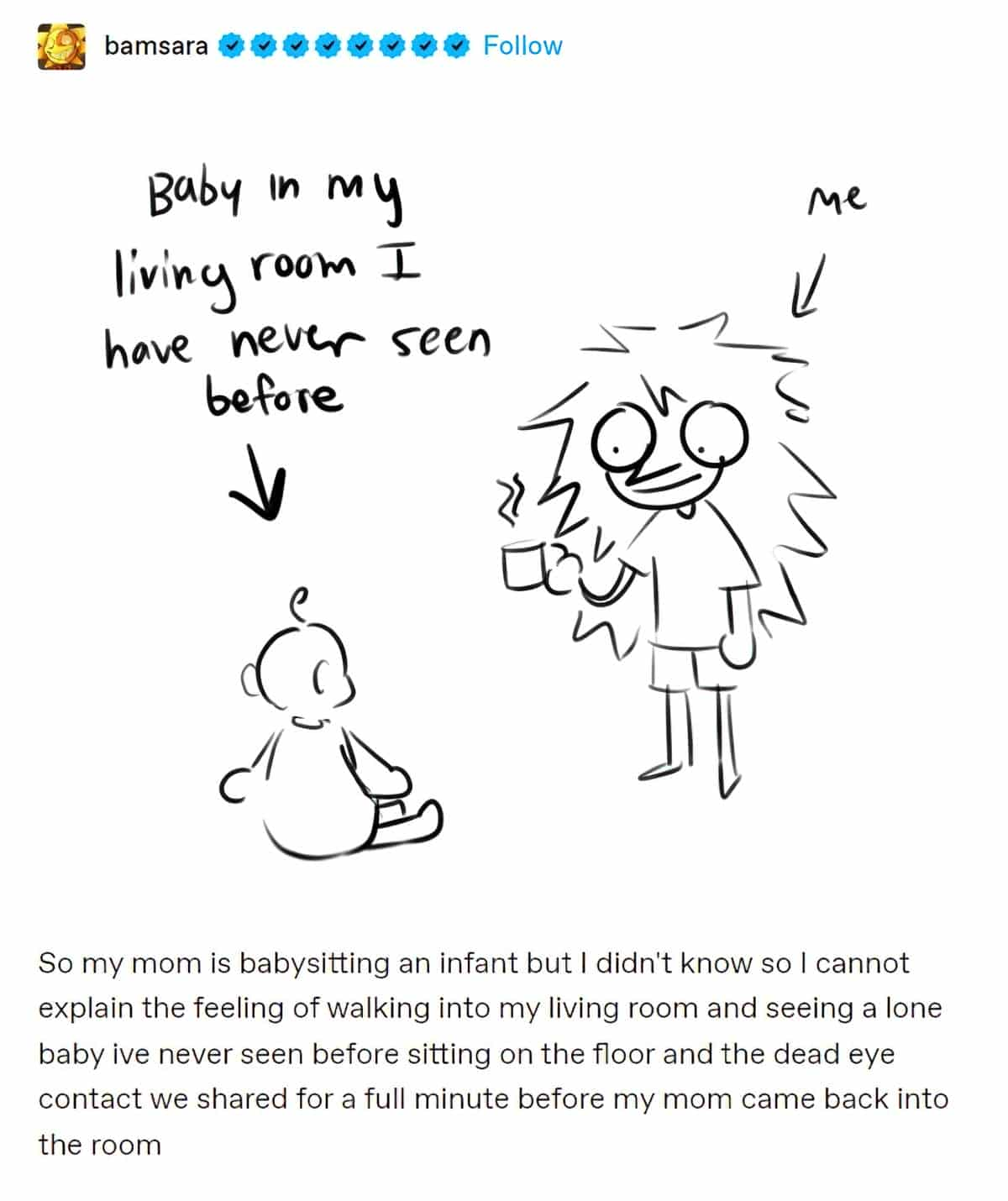
Just like many horror franchises this mini-series really outstays it’s welcome, definitely a case of diminishing returns as yet again Jenny puts herself in the same situation as the previous books…
consumer review
So, I’m back to see if Jenny finally got an answering machine. At this point it feels like I’m a glutton for punishment. This series really should have finished three books ago. […] It’s weird; I don’t remember a single instance in this book where Jenny answered a creepy phone call. Considering those phone calls were pretty much the entire reason this series existed, it didn’t feel right.
consumer review
This one turns out to be a ghost story without any sort of forewarning that it is a supernatural tale! Cheap and lazy! Unfortunately, it’s a trick R.L. Stine has been pulling for a while now. What’s next? Jenny babysitting in space?
consumer review
VINTAGE MIDDLE GRADE HORROR PAPERBACK THRILLERS
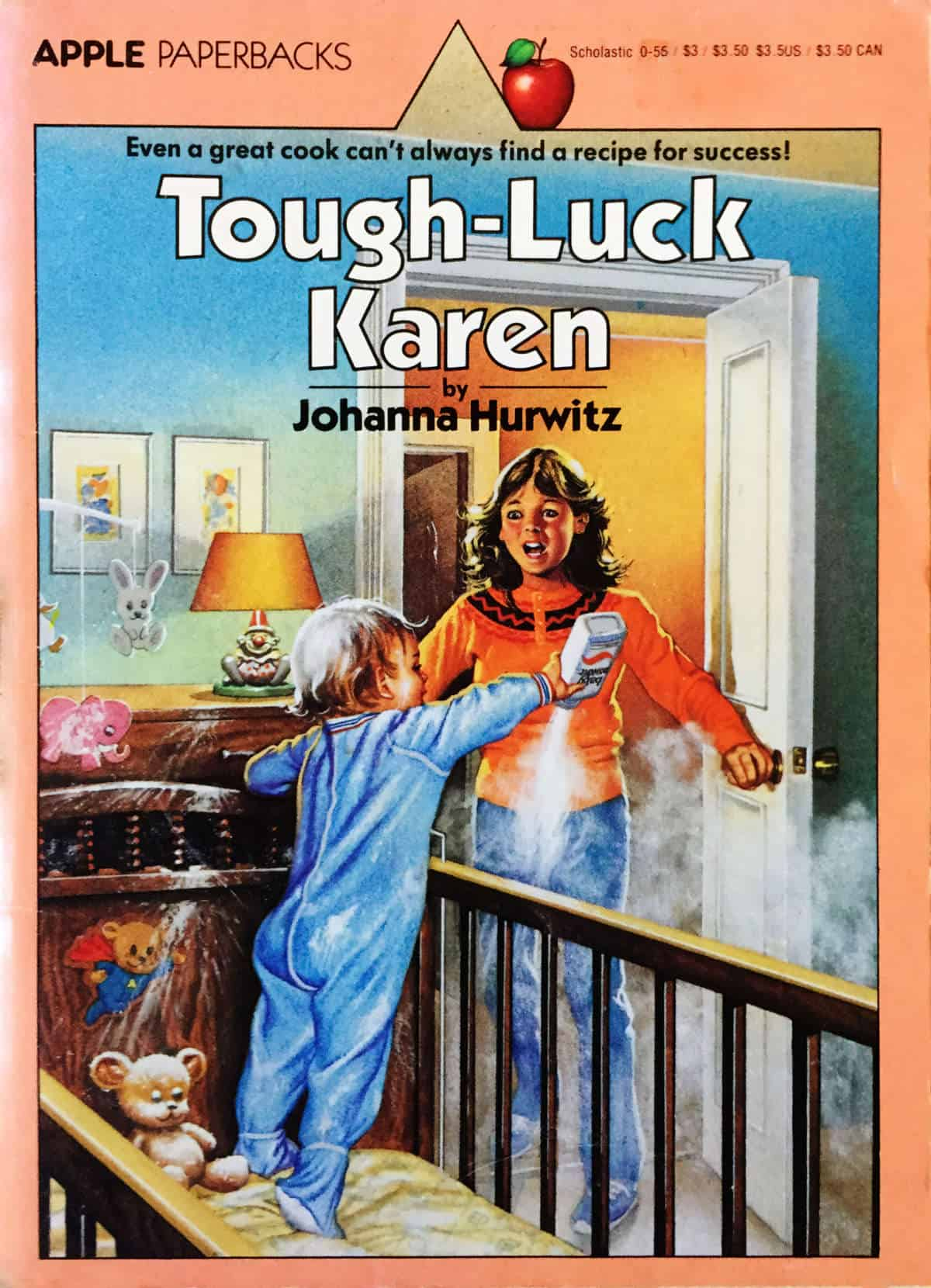
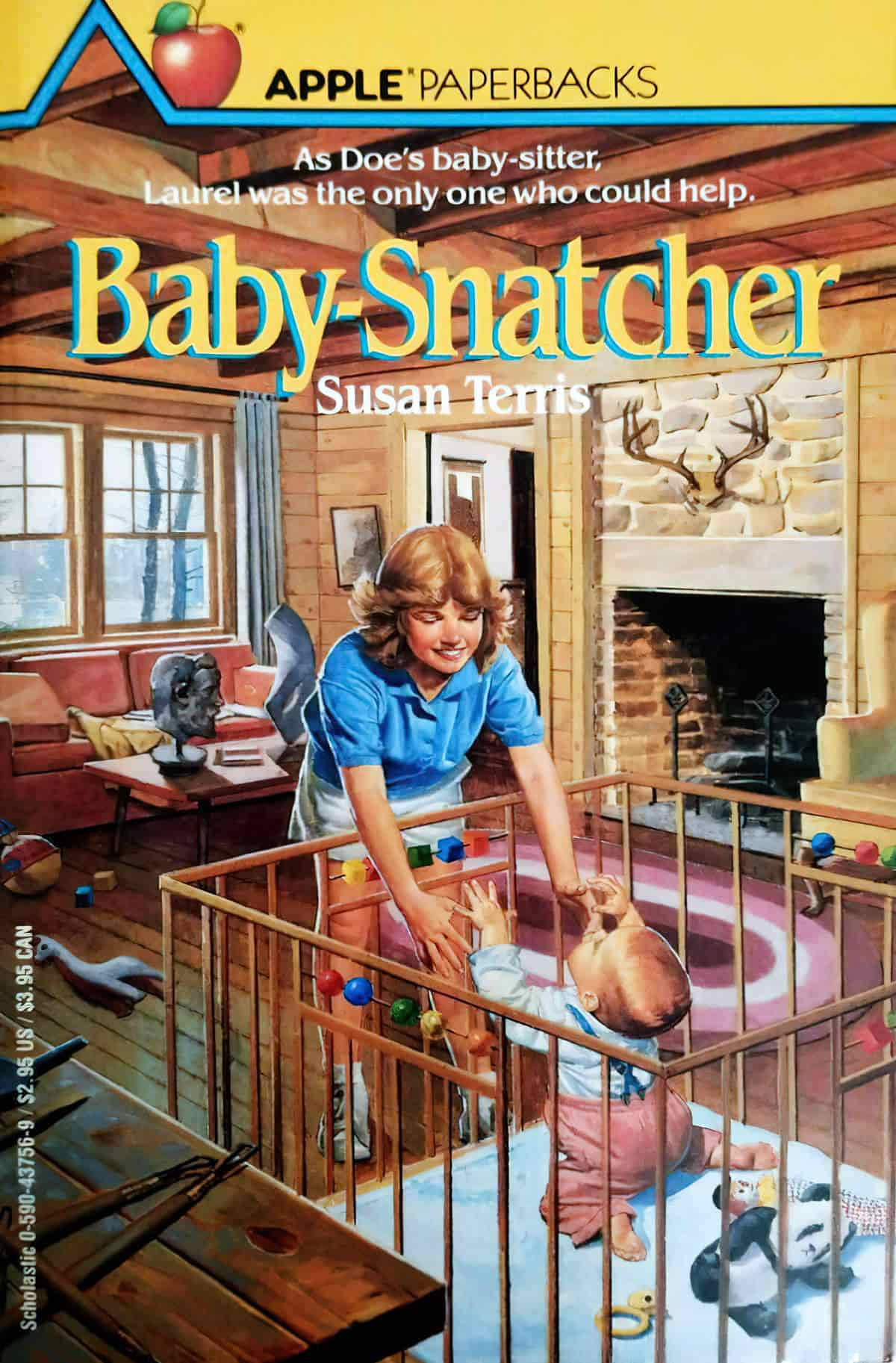
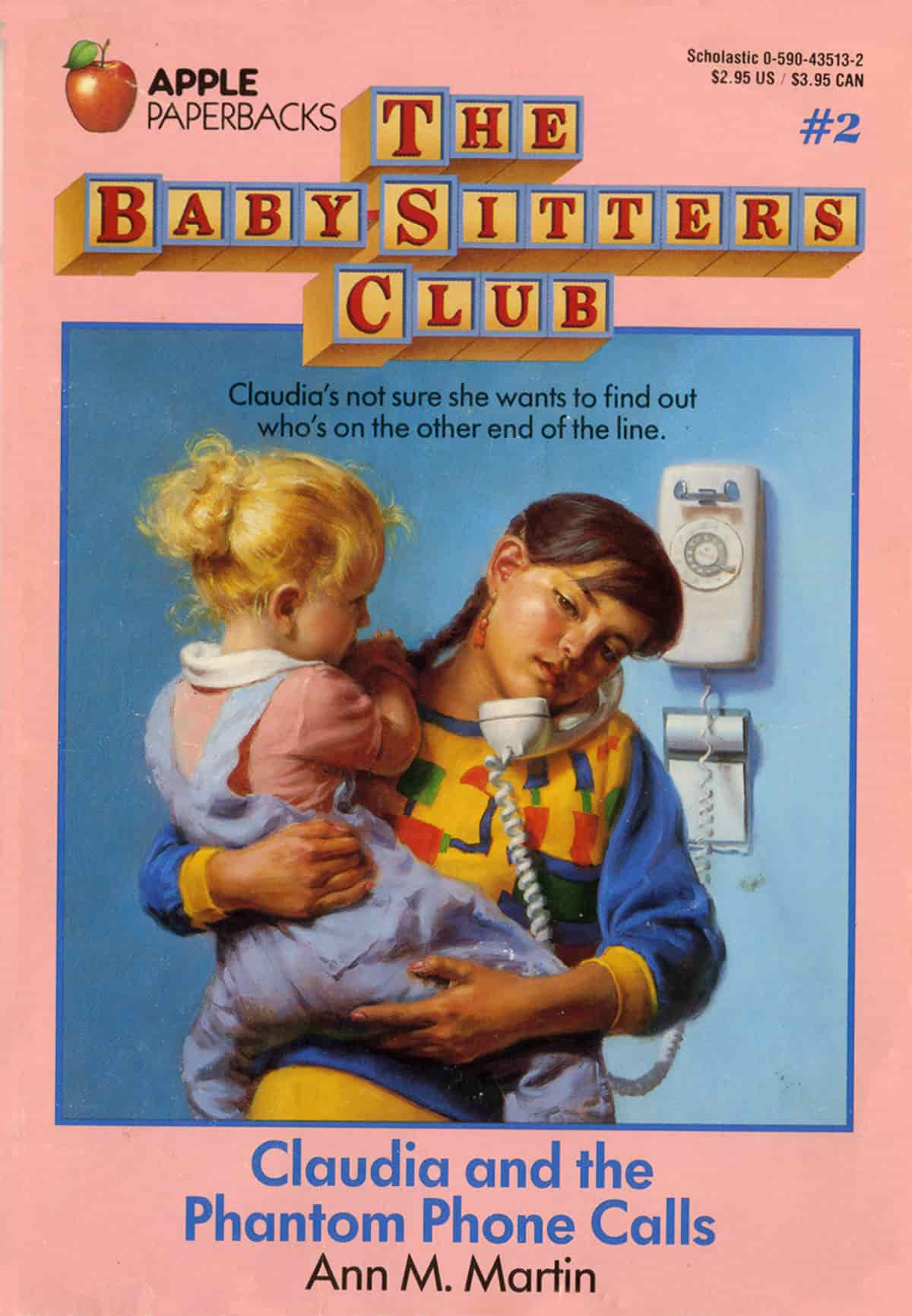
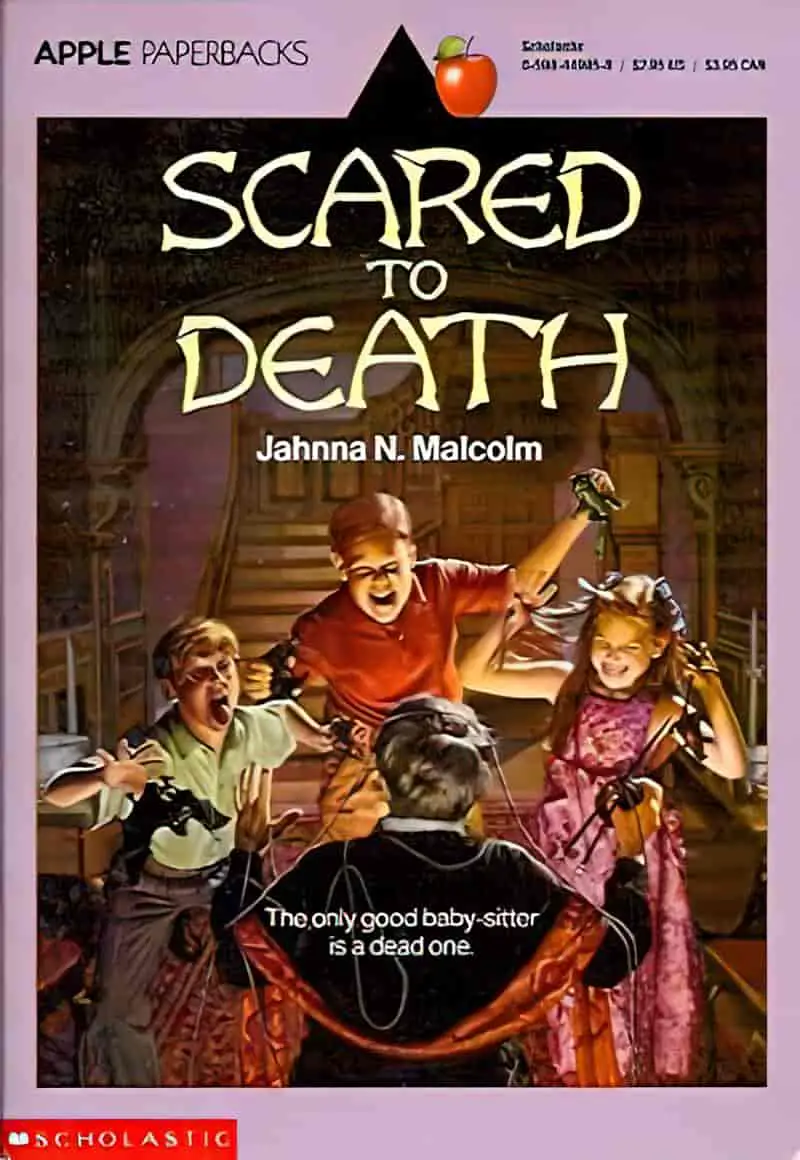
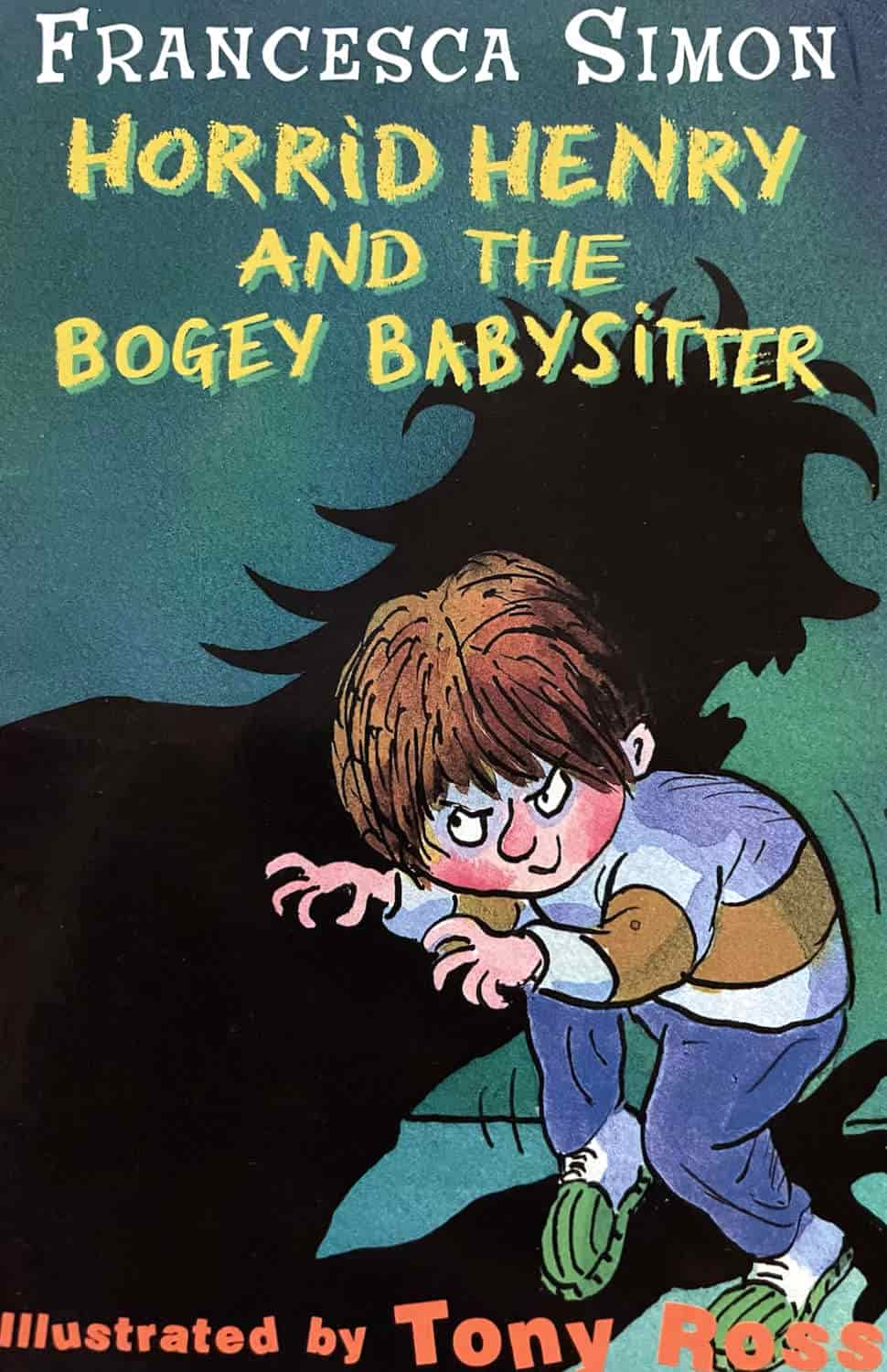
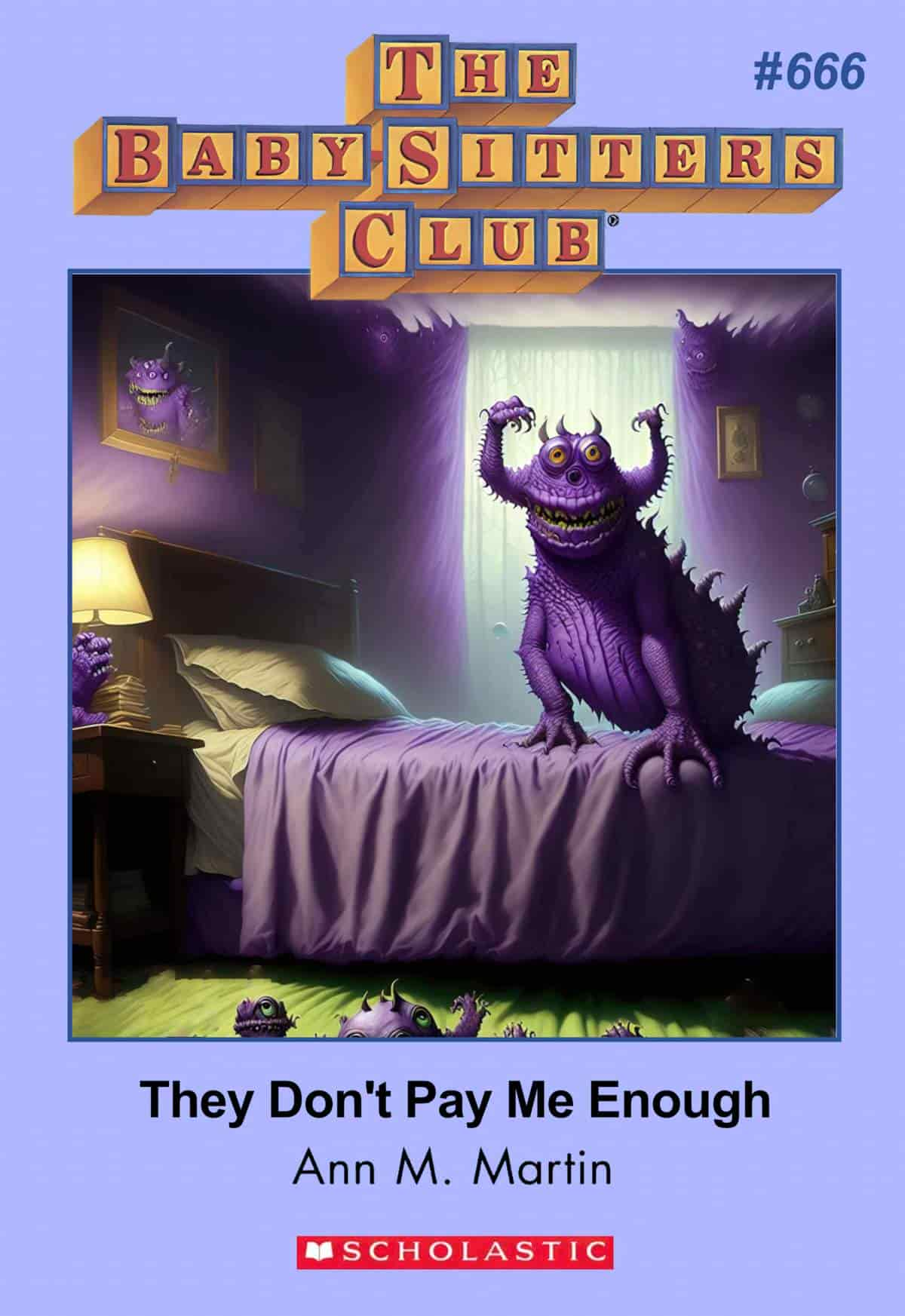
BABYSITTER STORIES AND BOYS
For boys, babysitters are pesky big sisters, somewhere between annoying and evil. According to the marketing copy, “Horrid Henry encounters the babysitter from hell, traumatizes his parents on a car journey, goes trick or treating at Hallowe’en, and sabotages his school project.”
Babysitters stand in the way of a boy’s burgeoning manliness, according to himself. His inability to look after himself, despite self image, is frequently lampooned.
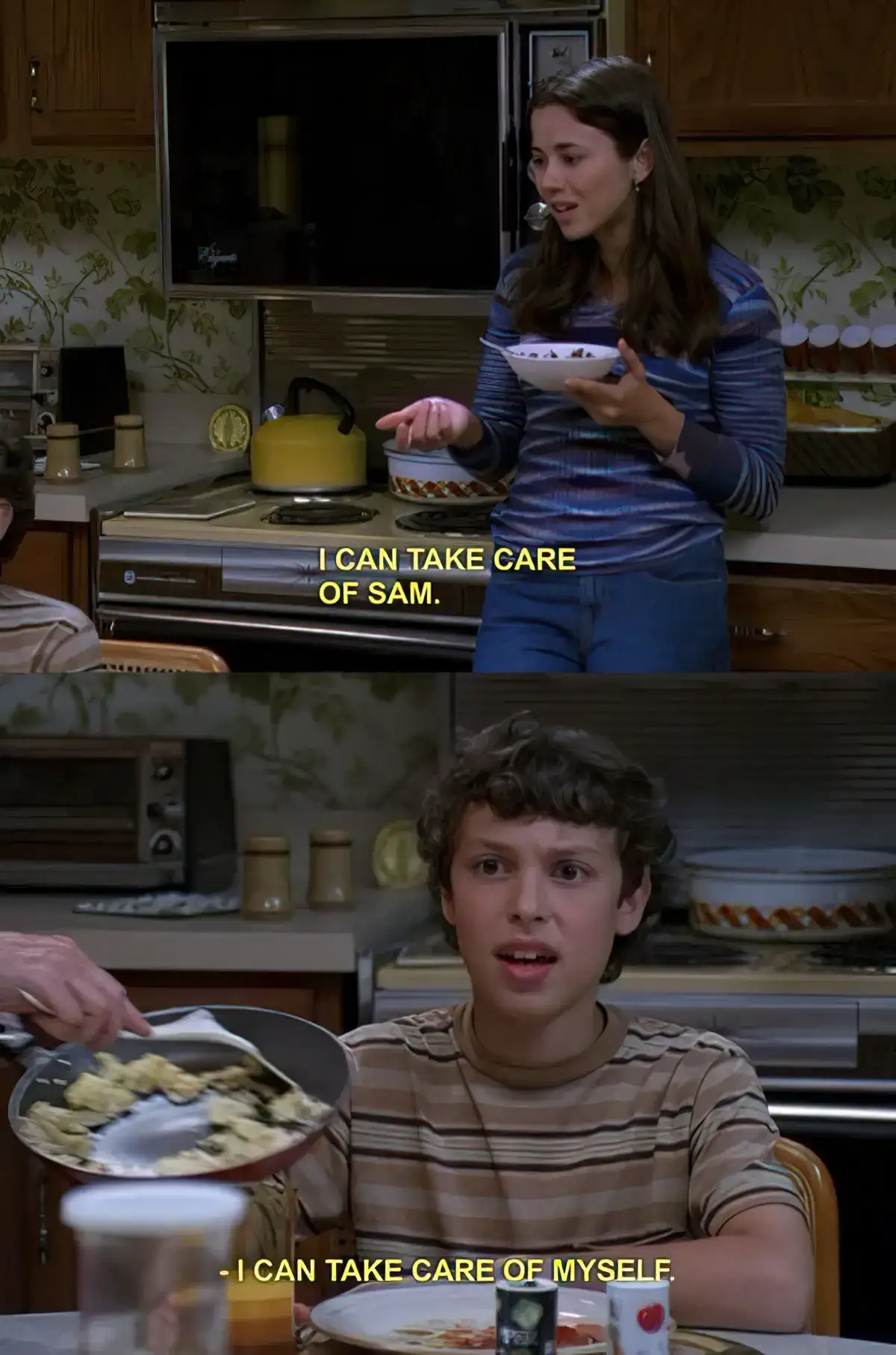
CONTEMPORARY CHILDREN’S STORIES FEATURING BABYSITTERS
If popular middle grade series continue long enough, you’ll eventually get a story about a babysitter.
BEST BABYSITTERS EVER BY CAROLINE CALA 2019
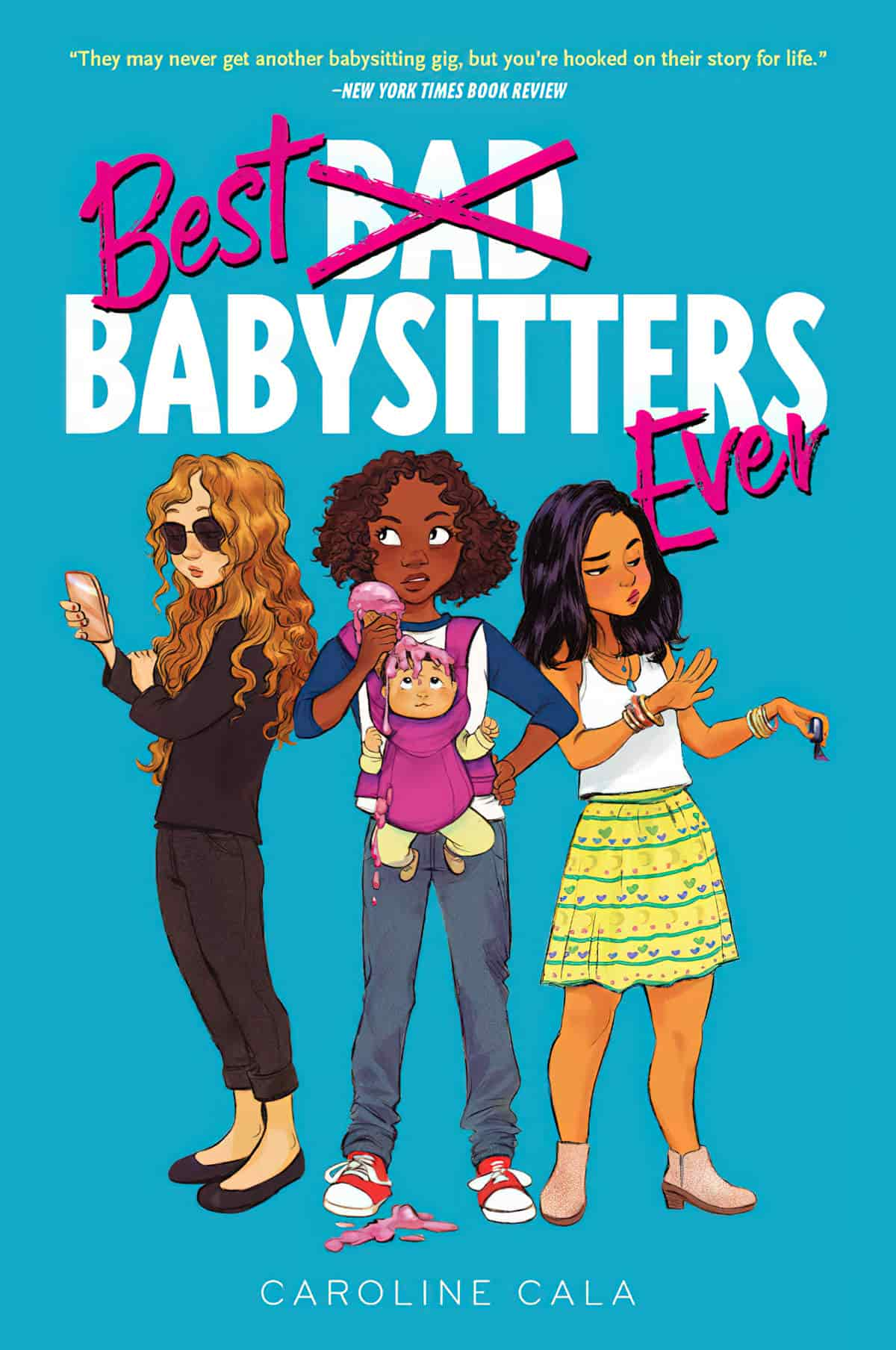
A funny new middle grade series about three 12-year-old best friends who start a babysitting club in their small California town. Perfect for fans of series like Whatever After and the Dork Diaries.
Once upon a time, a girl named Kristy Thomas had a great idea: to form The Baby-Sitters Club with her best friends. And now twelve-year-old Malia Twiggs has had a great idea too. Technically, she had Kristy’s idea. (And technically, little kids seem gross and annoying, but a pay-check is a pay-check). After a little convincing, Malia and her friends Dot and Bree start a babysitting club to earn funds for an epic birthday bash. But babysitting definitely isn’t what they thought it would be.
Three friends. No parents. Unlimited snacks. And, okay, occasionally watching other people’s children. What could possibly go wrong?
JENNIFER THE BABYSITTER FAIRY 2013
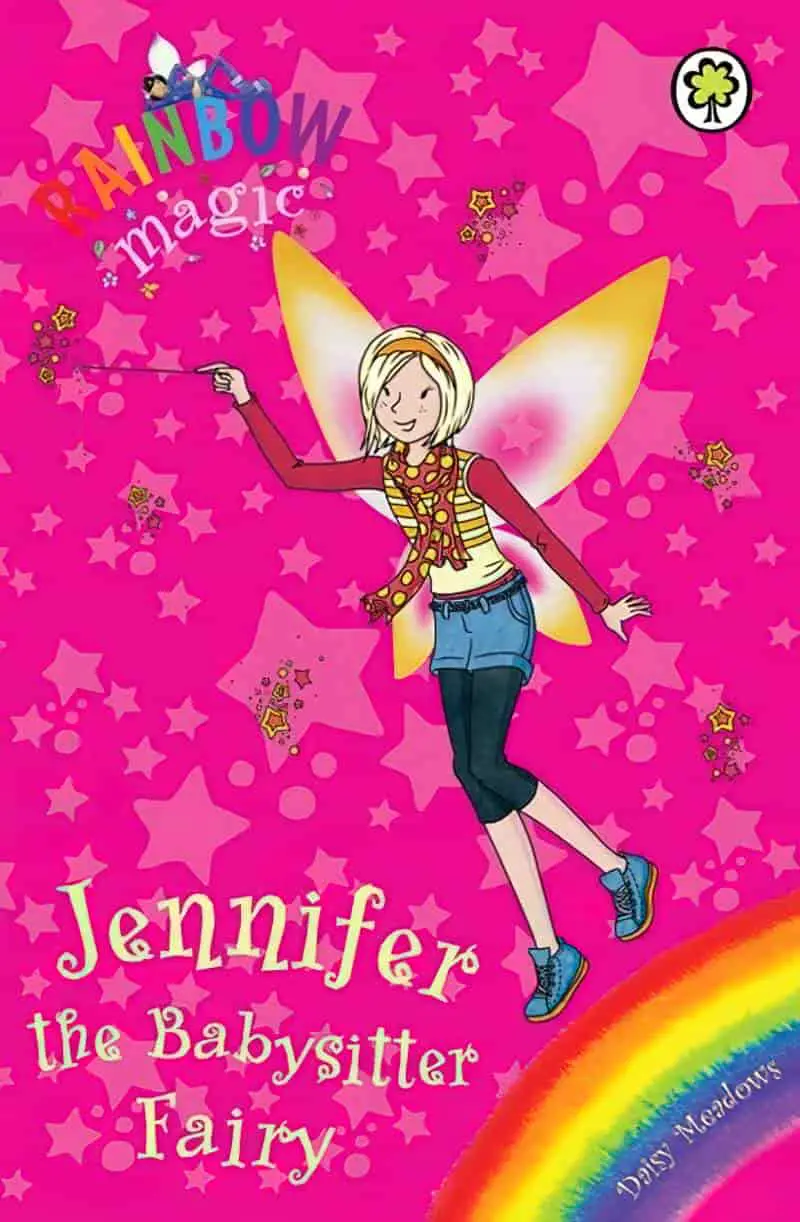
Jack Frost isn’t kidding around!
No one is better at taking care of little kids than Bailey the Babysitter Fairy. She makes the best snacks, reads the best bedtime stories, and comes up with the best games. But when Rachel and Kirsty meet her, Bailey is having her worst day yet. Goblins have stolen her magical items and the Fairyland Nursery is in chaos!
Rachel and Kirsty want to help! If they can’t find Bailey’s magical items, babysitting will never be the same. Jack Frost’s bad mood is making everyone cranky–it’s up to the girls to turn frowns upside down!
Find the magic objects in all three stories inside this Rainbow Magic(TM) Special Edition and help save the babysitting magic!
IVY + BEAN TAKE CARE OF THE BABYSITTER BY ANNIE BARROWS AND SOPHIE BLACKALL
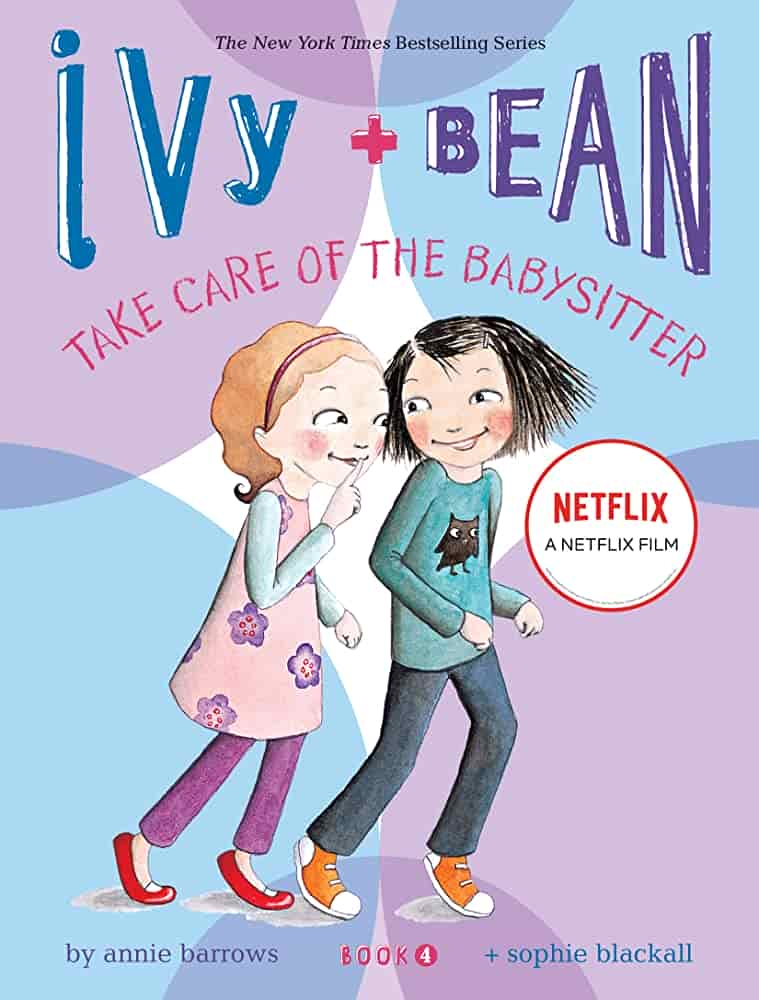
The adventures of Ivy and Bean continue in the latest instalment from series creators Annie Barrows and Sophie Blackall. In Ivy and Bean Take Care of the Babysitter, the two girls hatch a plan to prove that Bean’s big sister is the world’s worst babysitter.
Of course plans go awry, but fun ensues!
BABYMOUSE: BAD BABYSITTER BY JENNIFER L. HOLM & MATTHEW HOLM
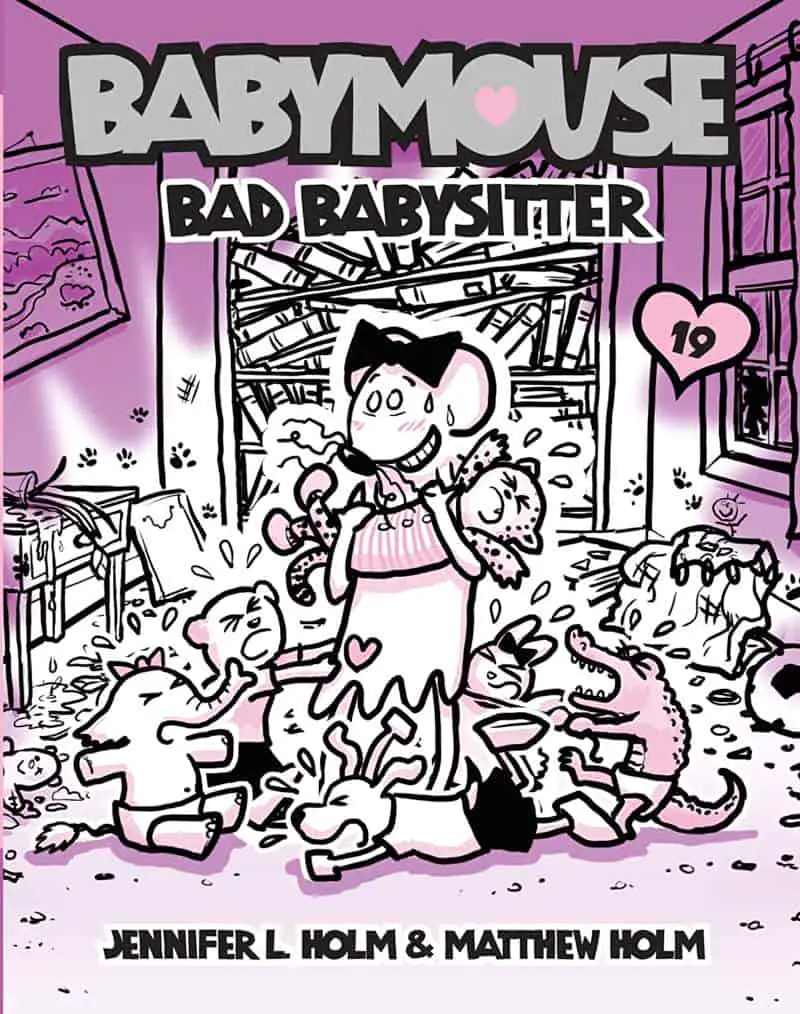
Wanted: Expert babysitter. Babymouse will finally have enough money to buy cool stuff! All she has to do is take care of a few kids. No problem! Who’s more responsible than Babymouse? She’s practically Mary Poppins! (Okay, maybe that’s going a little too far.) Will Babymouse be the ultimate sitter? Or will triplets mean triple trouble? Find out in Bad Babysitter—the nineteenth laugh-out-loud installment of the beloved Babymouse graphic novel series. BONUS PAGE: Learn to draw a character!
FANCY NANCY AND THE SENSATIONAL BABYSITTER BASED ON THE CREATION OF JANE O’CONNOR AND ROBIN PREISS GLASSER
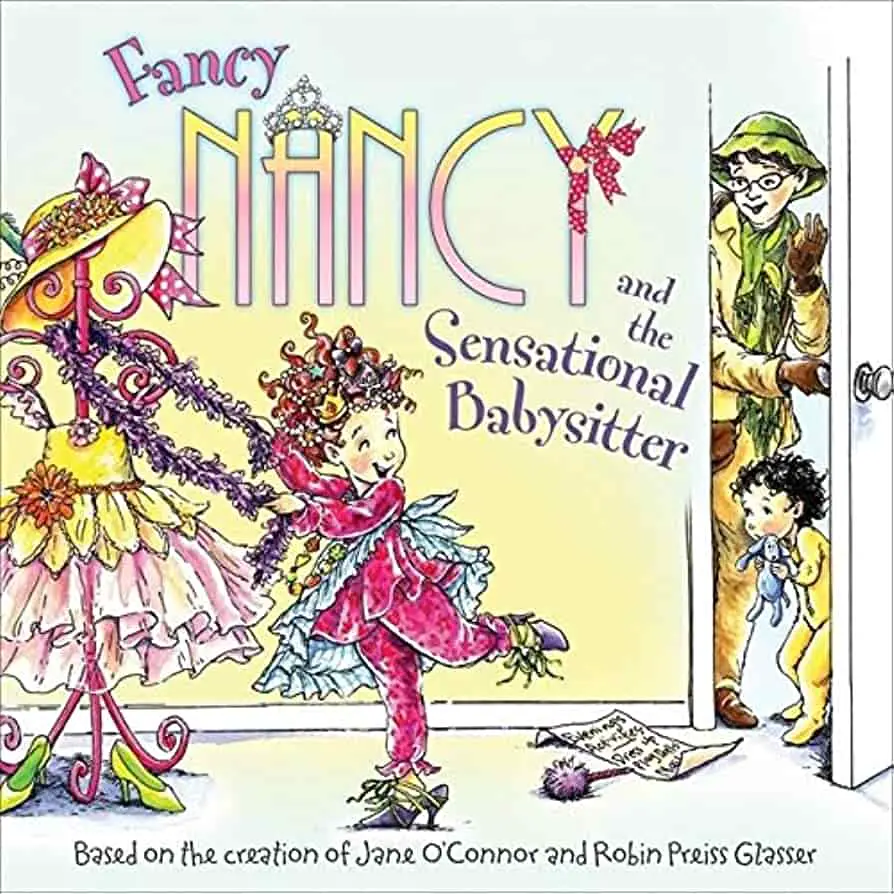
Nancy is tremendously excited about her new babysitter coming over. She has their whole evening planned out, from playing with Marabelle to dressing up in fancy ensembles. But things don’t turn out quite as Nancy had planned!
A BABYSITTER’S GUIDE TO MONSTER HUNTING BY JOE BALLARINI AND VIVIENNE TO 2017
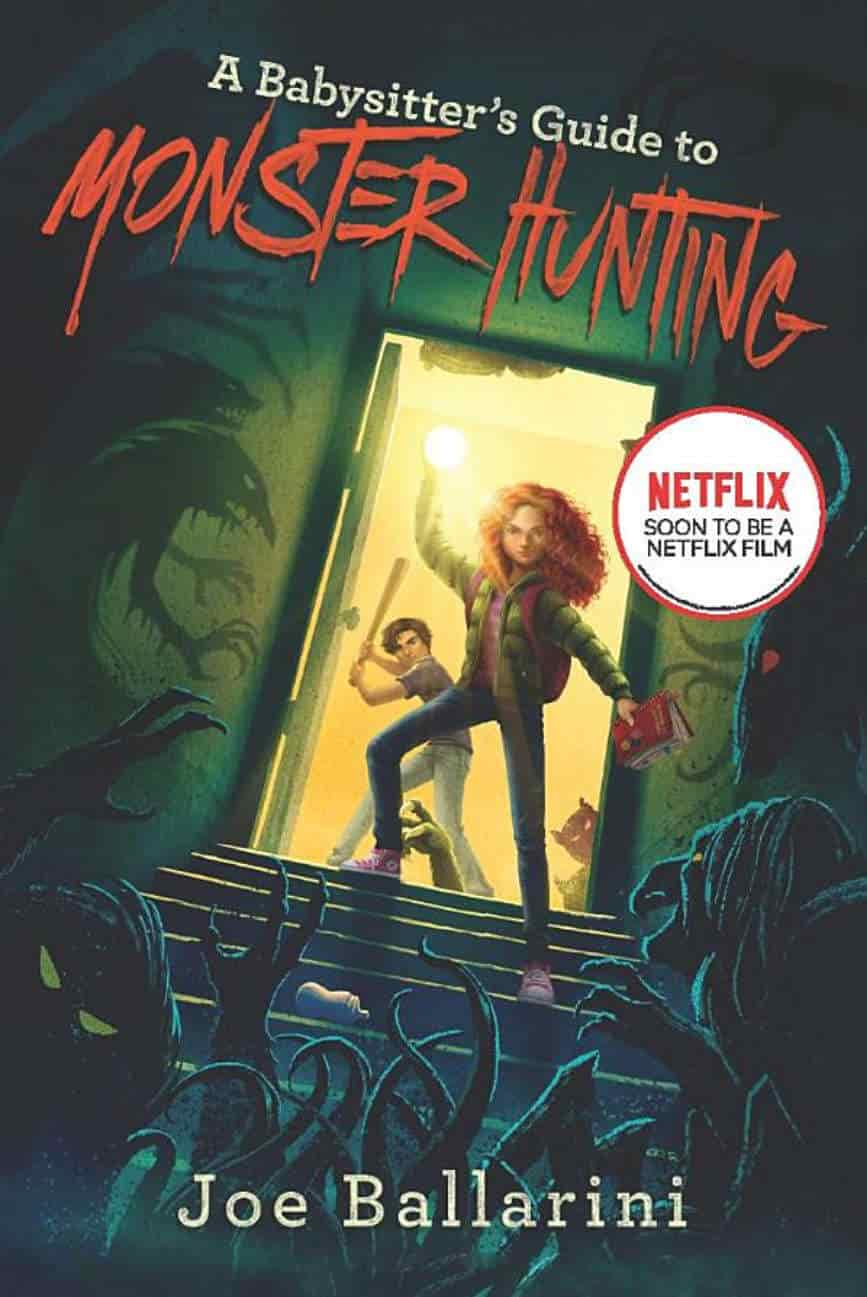
The Last Kids on Earth meets Goosebumps in this hilarious new series about a secret society of babysitters who protect kids from the monsters that really do live under their beds!
When middle schooler Kelly Ferguson’s Halloween plans switch from party-going to babysitting, she thinks the scariest part of her night will be the death of her social life. But then Baby Jacob gets kidnapped by the Boogeyman’s minions and Kelly learns there’s a whole lot more to childcare than free snacks and Netflix. Like chasing shadow monsters, drop-kicking Toadies, and mastering monster-fighting moves like the Naptime Headlock and Playground Punch.
Now, with the help of an ancient handbook and a secret society of butt-kicking babysitters, Kelly sets out to destroy the Boogeyman before he brings Jacob’s nightmares to life. But when the monsters’ trail leads to her school’s big Halloween bash, Kelly will have to prove she can save the world—without totally embarrassing herself in front of her friends.
This series has been adapted for screen.
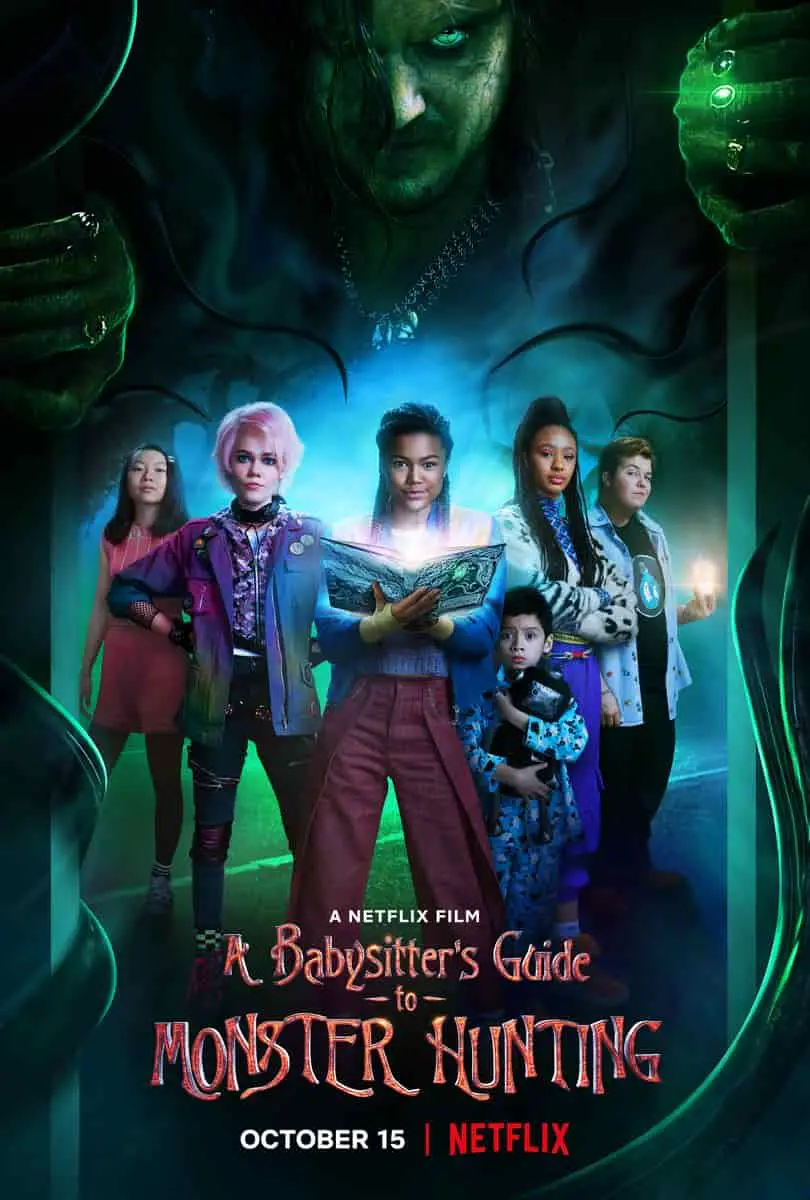
THE BABYSITTERS COVEN BY KATE WILLIAMS 2019
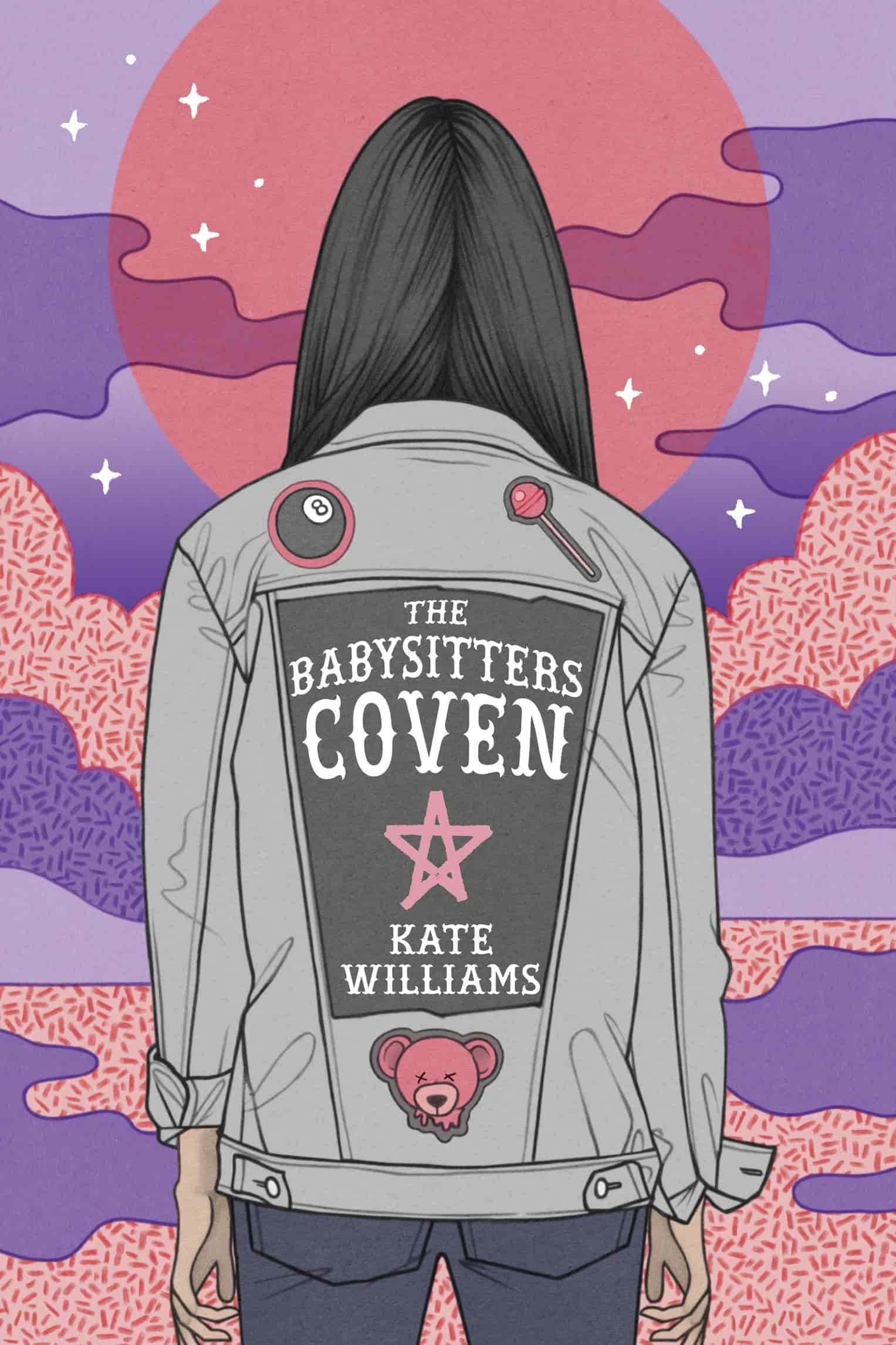
Adventures in Babysitting meets Buffy the Vampire Slayer in this funny, action-packed novel about a coven of witchy babysitters who realize their calling to protect the innocent and save the world from an onslaught of evil.
Seventeen-year-old Esme Pearl has a babysitters club. She knows it’s kinda lame, but what else is she supposed to do? Get a job? Gross. Besides, Esme likes babysitting, and she’s good at it.
And lately Esme needs all the cash she can get, because it seems like destruction follows her wherever she goes. Let’s just say she owes some people a new tree.
Enter Cassandra Heaven. She’s Instagram-model hot, dresses like she found her clothes in a dumpster, and has a rebellious streak as gnarly as the cafeteria cooking. So why is Cassandra willing to do anything, even take on a potty-training two-year-old, to join Esme’s babysitters club?
The answer lies in a mysterious note Cassandra’s mother left her: “Find the babysitters. Love, Mom.”
Turns out, Esme and Cassandra have more in common than they think, and they’re about to discover what being a babysitter really means: a heroic lineage of superpowers, magic rituals, and saving the innocent from seriously terrifying evil. And all before the parents get home.
HOW MUCH SHOULD YOU PAY YOUR BABYSITTER?
Now you’re acquainted with tropes of babysitter horror thrillers, you may want to increase your child-minder’s pay. One good reason: Women are not paid what they’re worse. The pay gap starts in childhood. And the covid 19 pandemic has made things worse:
Brown noted that women were often the ones who “stepped up to home-school, to take care of children, to take care of parents and to take care of people with health problems” during the pandemic.
Stephen Barker, director of communications at OneGoal said the caretaking trend trickled down to young women who were “disproportionately caring for siblings at home while their parents were working.”
New Data: Female College Enrollment Drops at Twice the Rate of Male Students, The 74
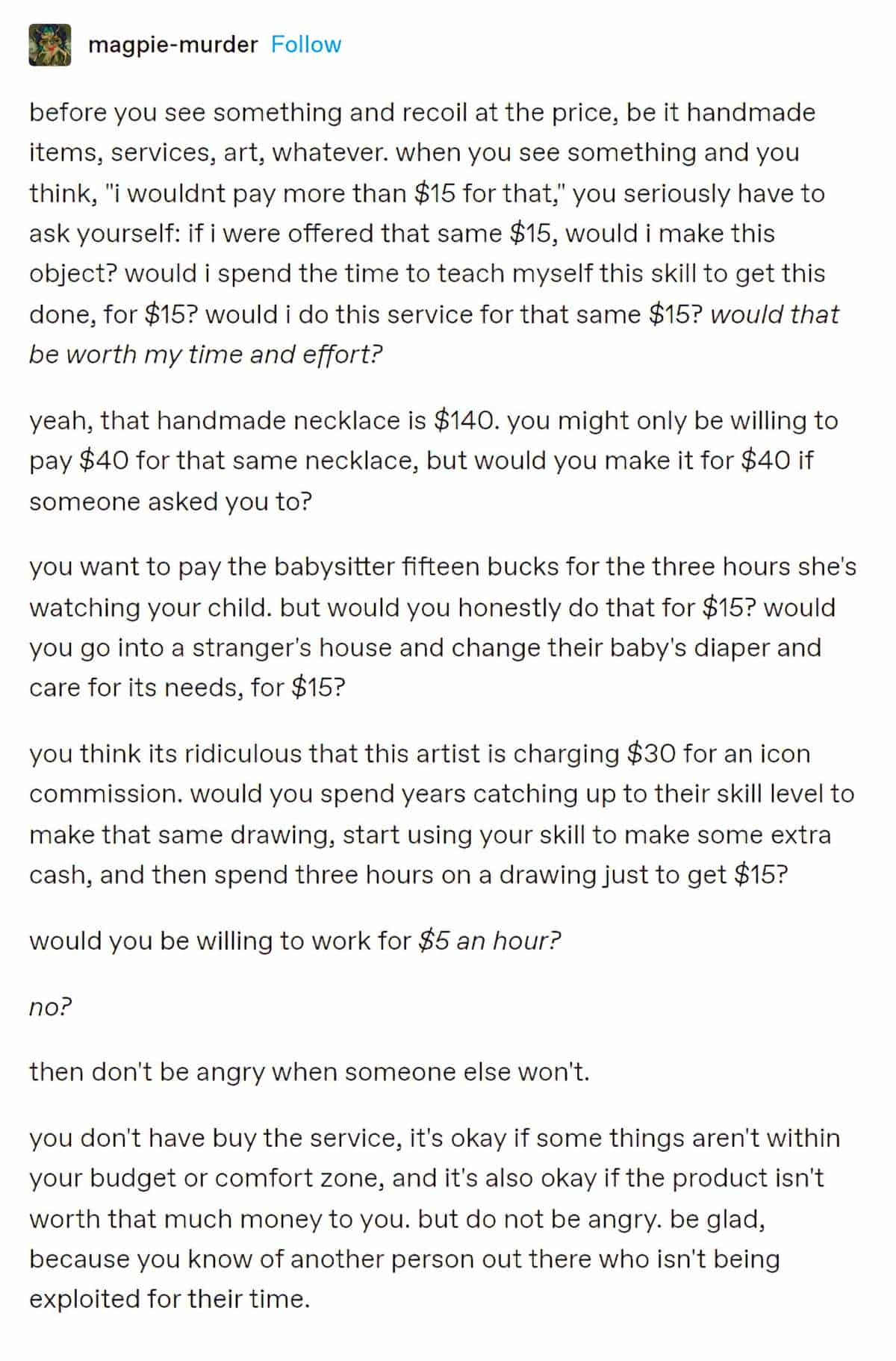
Header illustration: 1947, Baby Sitter by Norman Rockwell
